Louis Moinet Brand
Louis Moinet: 8 Marvels Of The World - A Journey Through Time
Luxferity, 08.06.2021

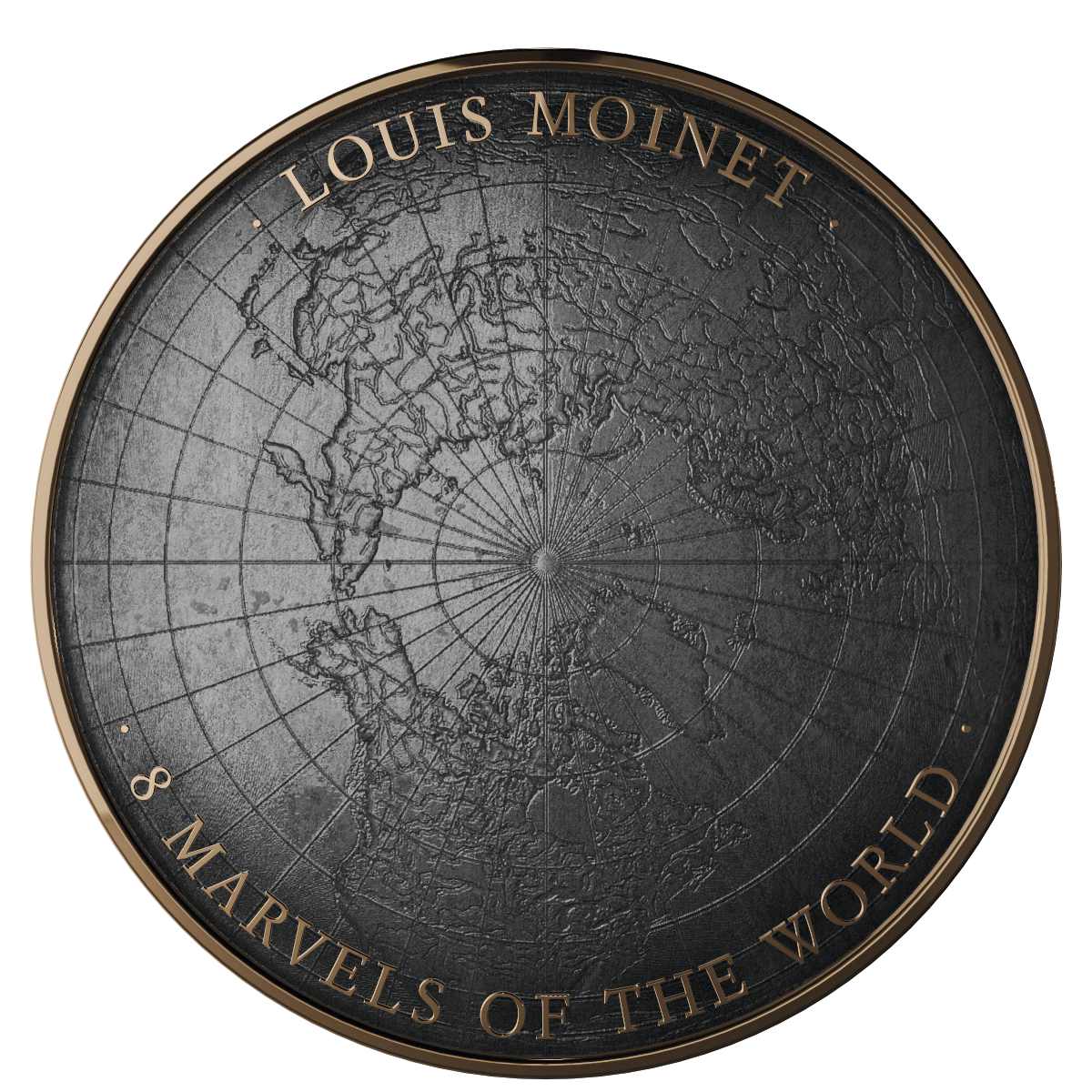
« 8 Marvels of the World » invites you on a fascinating discovery of eight of the most beautiful human achievements across the ages.
Each of them is reinterpreted by Louis Moinet and its clan of artisans, whose burins, brushes and chisels shape the materials to reflect the finest craftsmanship.
This initiatory journey encompasses eight one-of-a-kind creations, presented in the Louis Moinet travel trunk.
- The Colosseum
It is the largest ovoid amphitheatre ever built in the Roman Empire. It could accommodate up to 50,000 people, who attended shows as varied as plays and gladiatorial fights. For its inauguration, Emperor Titus even transformed the arena into a water basin to recreate the naval battle of Corinth against Corcyra.
A major work of architecture but also of Roman engineering, its construction was completed in 80 AD under Emperor Titus. It remains the embodiment of the power of Imperial Rome and attracts over seven million visitors a year.
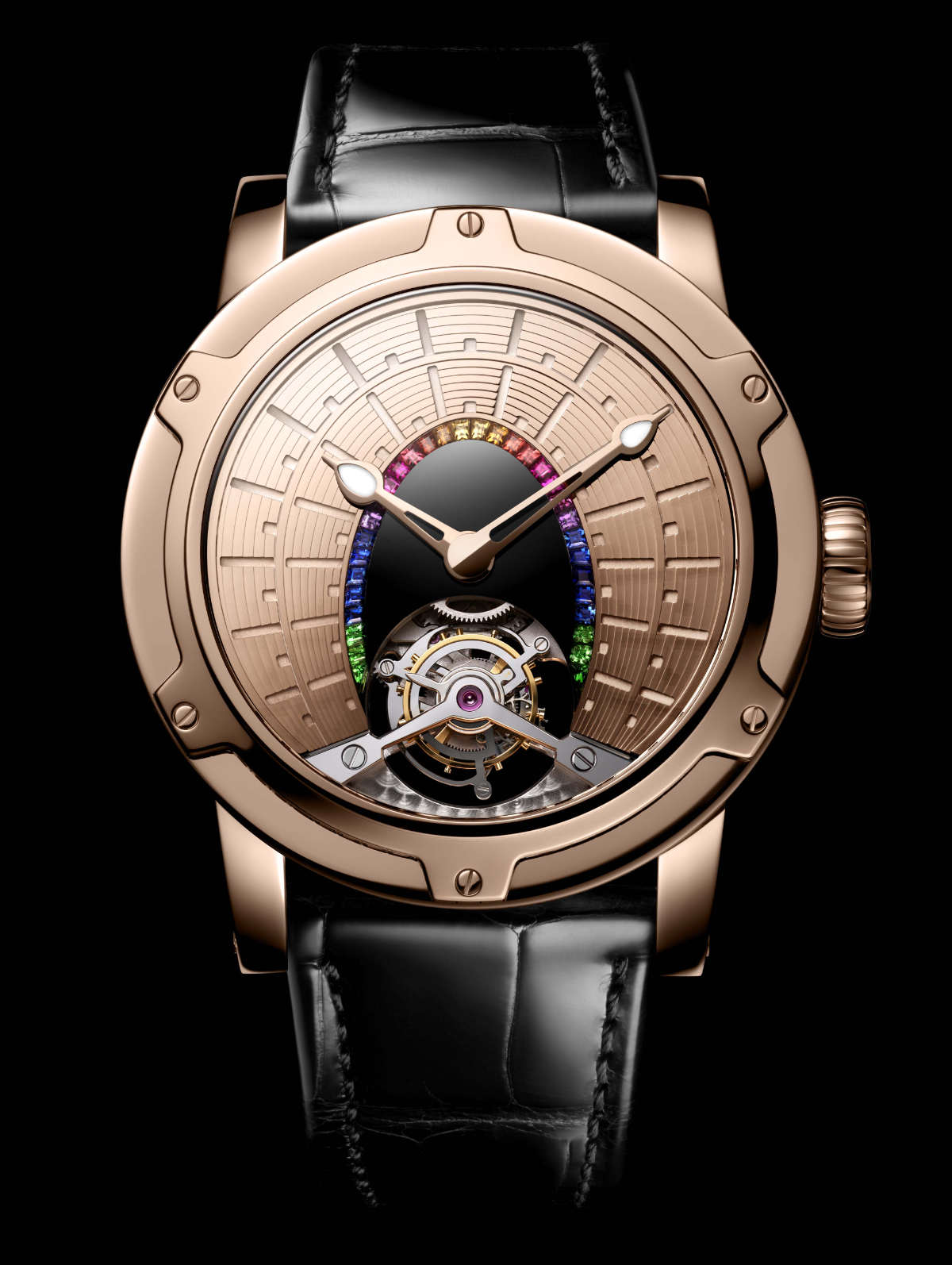

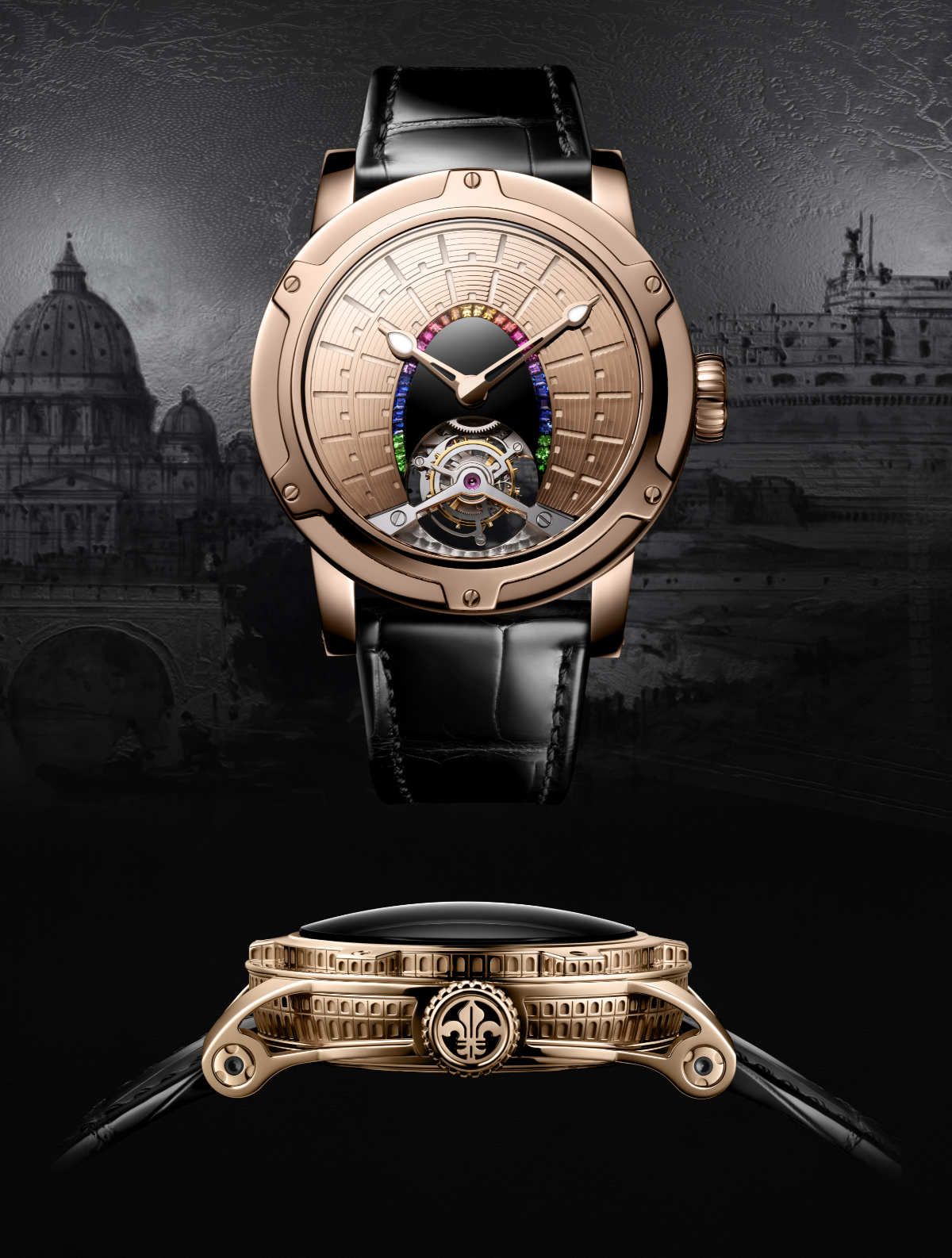
Artistic interpretation of the Colosseum
- Dial & case
The inside of the dial features an intramuros depiction of the Colosseum in its heyday. It shows the centre of the arena in onyx, surrounded by a magnificent symmetrical array of baguette-cut sapphires, arranged in a gradient ranging from green to yellow via all the colours of the rainbow.
Rising gradually all around it are the signature rows of seats. The steps of the Colosseum are finely detailed and polished. Their brilliance contrasts with other details of the work, which are sandblasted. The artist has sought to achieve maximum volume while preserving the unique nature of the Colosseum.
This timeless reproduction of the Colosseum also evokes its outer arches. A total of 112 arches for the case middle and 90 for the bezel are engraved in the rose gold of the Neo case, whose transversal bridge-lug concept lends itself perfectly to total artistic expression in this Colosseum.
- Mechanism – Calibre LM 35
60-second tourbillon movement, awarded the Gold Medal at the last International Chronometry Competition.
- The Blue Mosque
The Blue Mosque, also known as the Sultan Ahmet Mosque, is one of the historical mosques of Istanbul. Its construction was completed in 1616, during the reign of Sultan Ahmet I.
It is regarded as the last example of classical Ottoman architecture and owes its name to the 20,000 predominantly blue ceramic tiles adorning its inner walls. It is privileged to have six minarets and was an important starting point for the pilgrimage to Mecca.
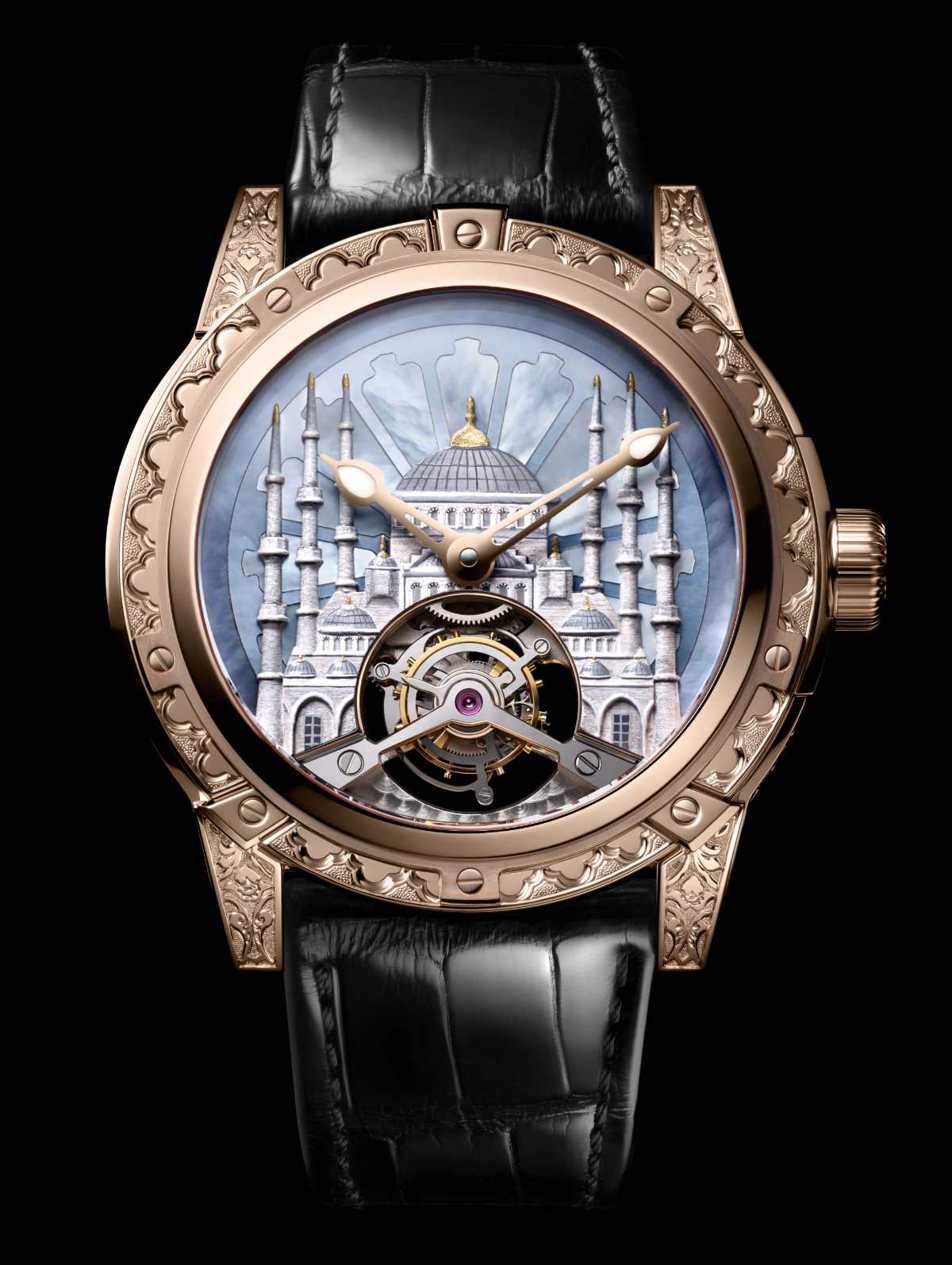
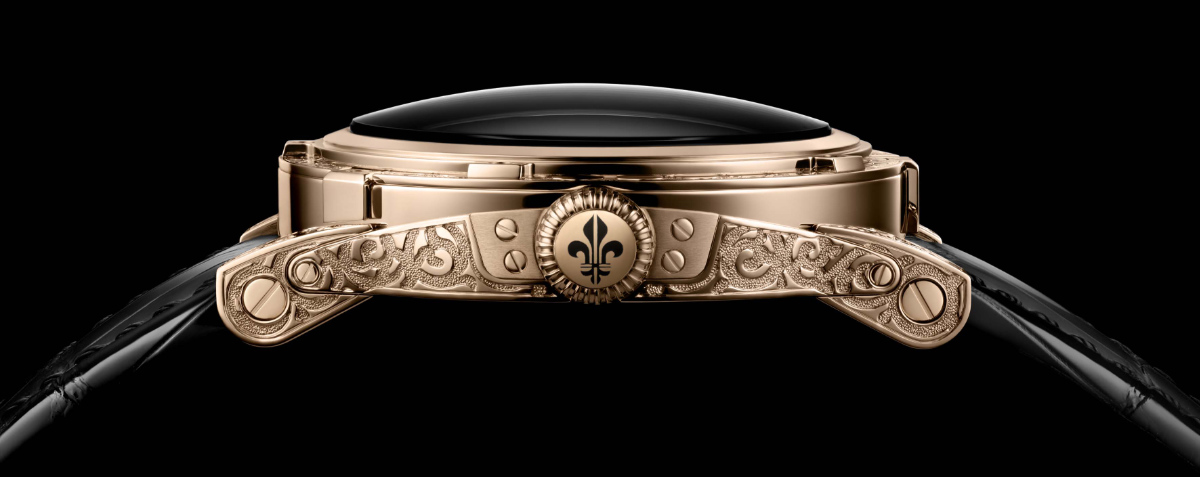
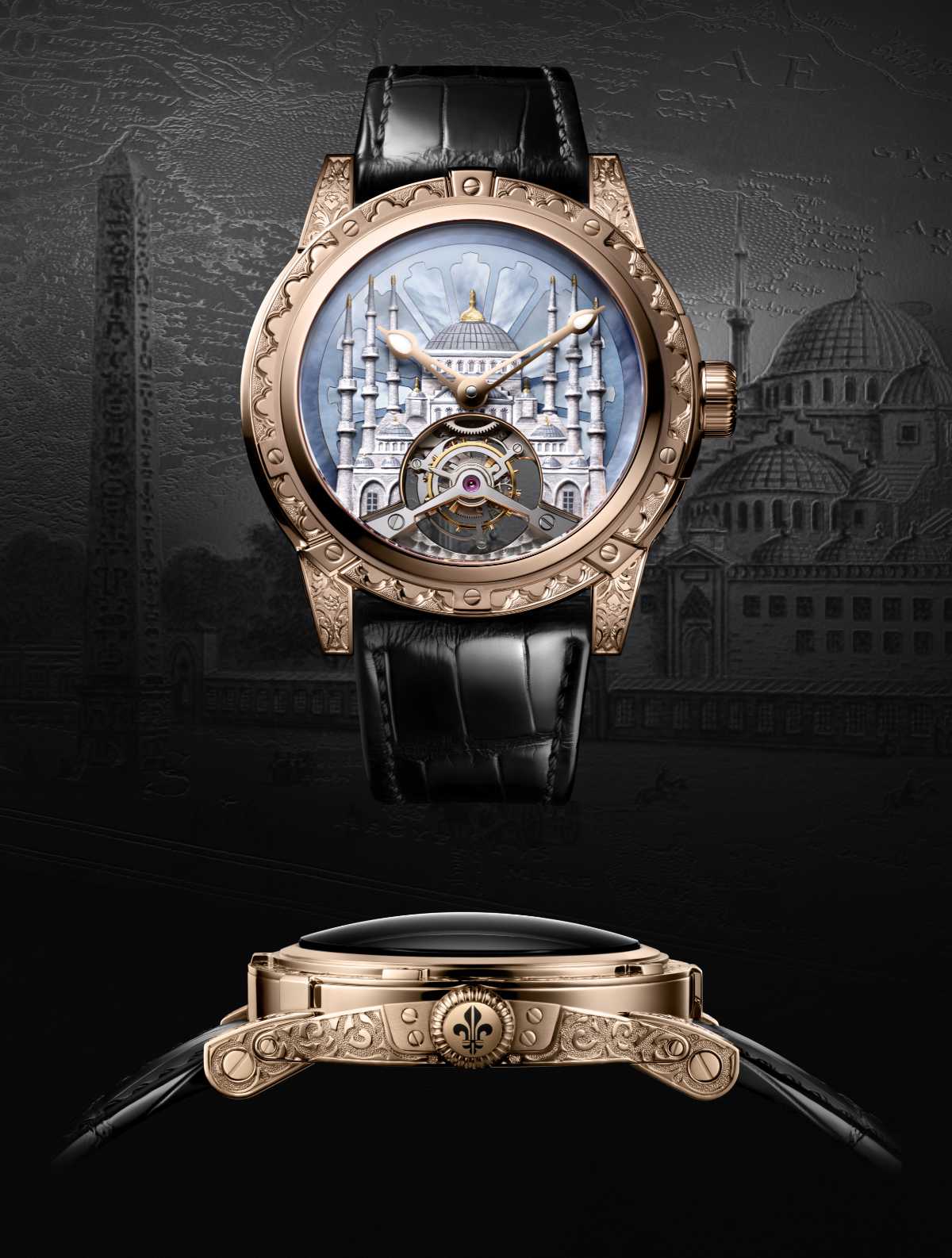
Artistic interpretation of the Blue Mosque
This interpretation aims to render the visual strength of the Blue Mosque, a major work representing the culmination of two centuries of development of both Ottoman mosques and Byzantine churches.
- Dial & case
The dial base is composed of a mother-of-pearl inlay consisting of 13 elements in different shades of blue. The background represents the motifs of the vaulted ceiling that decorate the interior of the Mosque. It features a hand engraving of the Blue Mosque, whose details are enhanced by miniature painting. The ribbed domes and half-domes create pleasing visual harmony, while the six minarets are finely chased to accentuate their grooves.
The case is entirely hand-chased. It represents an arabesque, a magnificent ornamental motif with complex interlacing patterns. This essential element of Islamic art is particularly highlighted by the chasing which combines finesse and accuracy.
- Mechanism – Calibre LM 35
60-second tourbillon movement, awarded the Gold Medal at the last International Chronometry Competition.
- Petra
Petra is an ancient Nabataean city located in Jordan, whose name means "rock" in ancient Greek. As early as the 6th century B.C., the Nabataeans made it a prosperous stage along the route of caravans carrying pearls and turquoise, ivory and silk, incense and spices. Petra was a real crossroads between Arabia and the Mediterranean, and between Egypt and Syria.
Having fallen into oblivion in the modern world, it was rediscovered by the Swiss explorer Jean-Louis Burckhardt in 1812. The emblematic building in Petra is the Khazneh, with its monumental facade carved into the rock face.
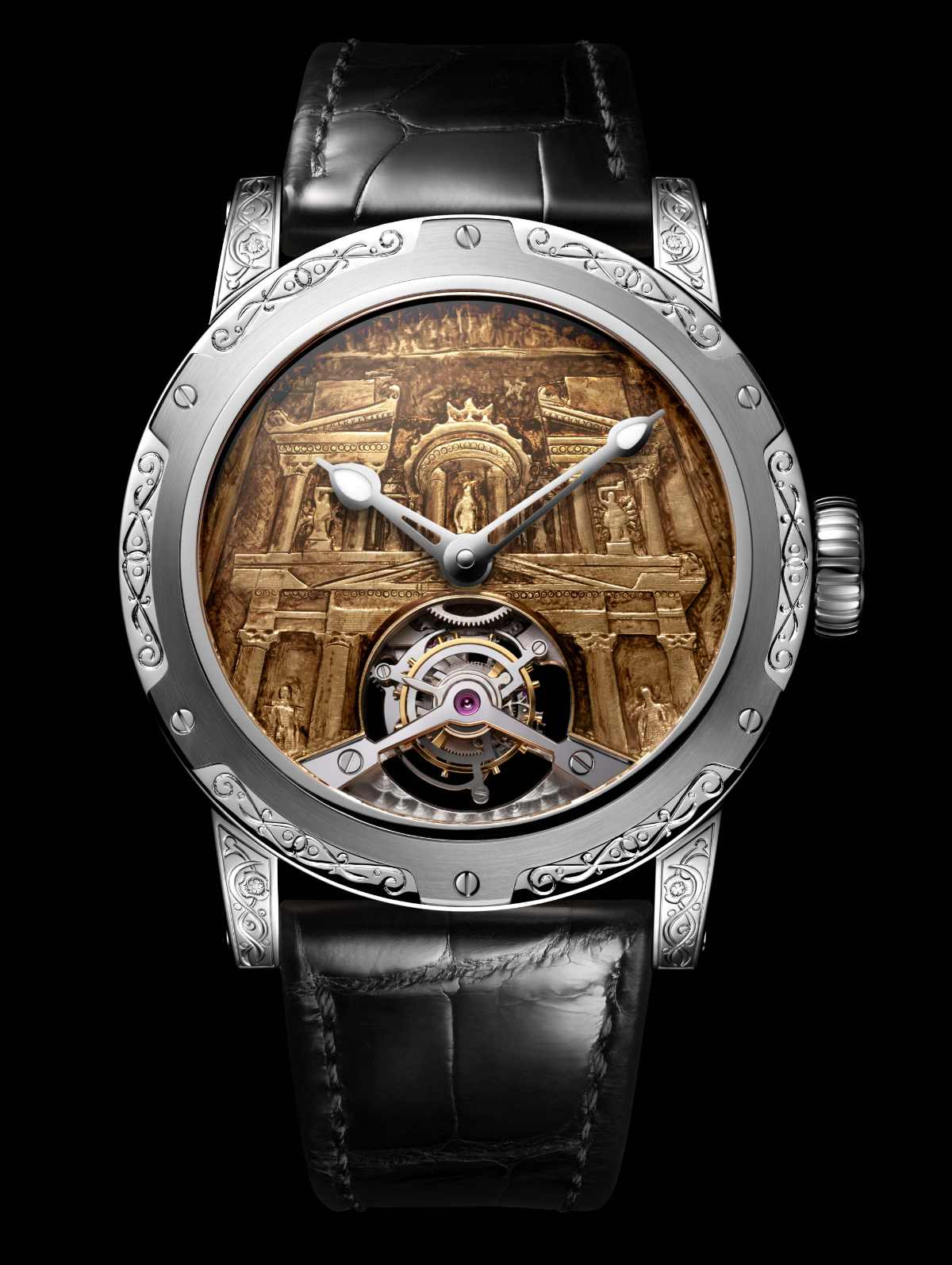
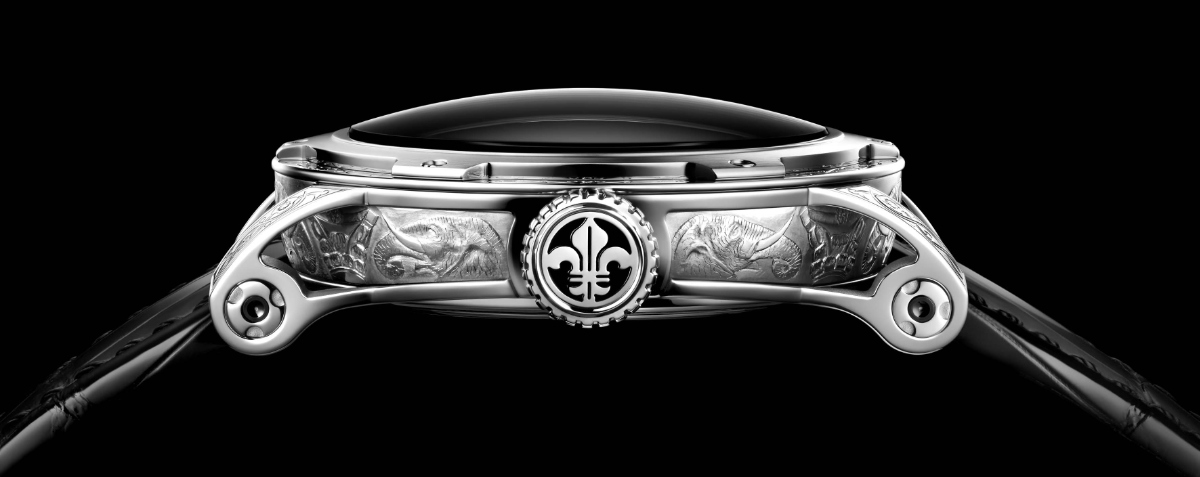
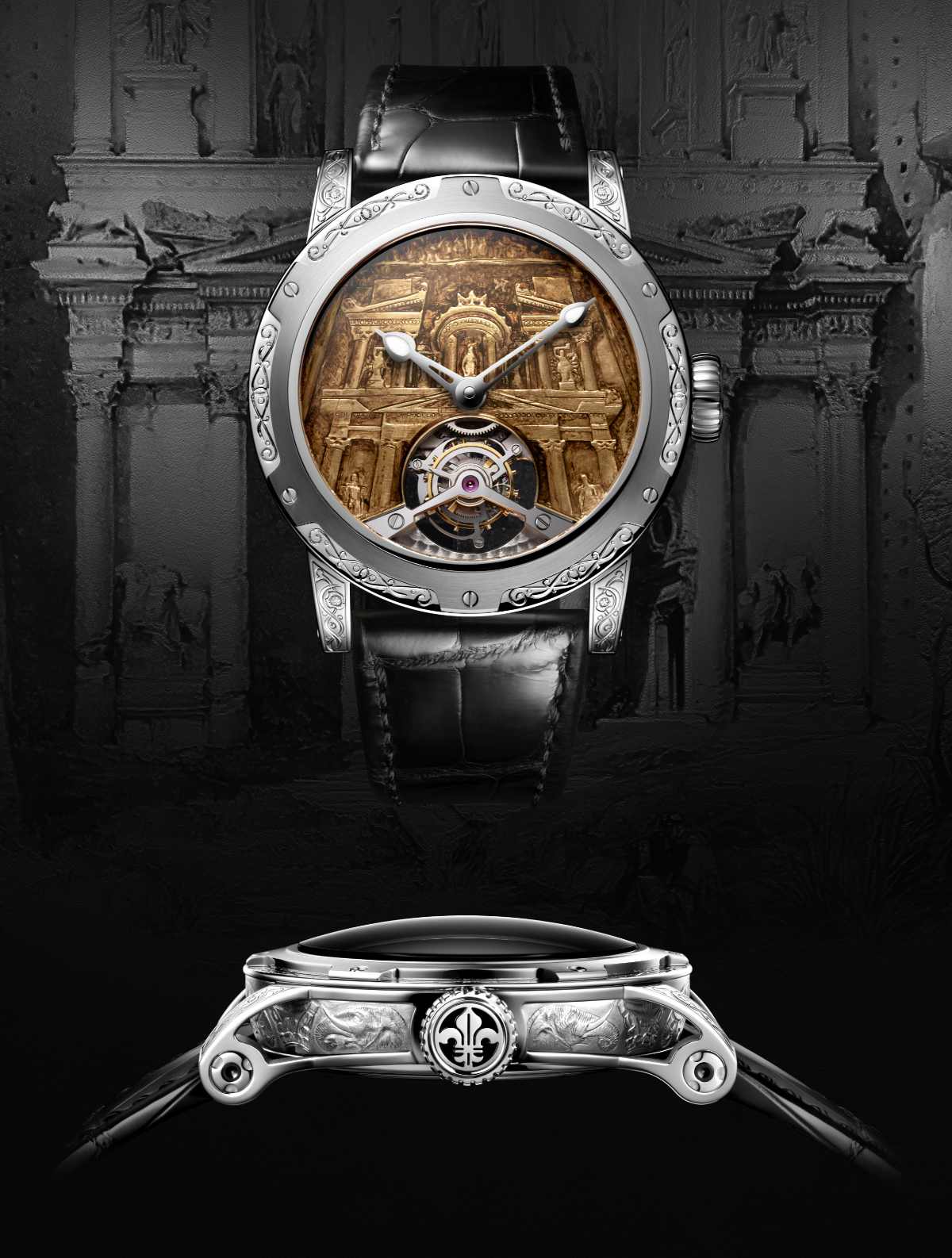
Artistic interpretation of Petra
- Dial & case
To enable us to imagine the power of Khazneh, the artist has combined – probably for the first time in watchmaking – three different techniques.
The process begins with a bas-relief engraving applied on a slightly rounded base to give more volume to the motif. This simulated perspective creates a striking depth effect. As the statues decorating the niches on the façade have now been destroyed, they could only be imagined thanks to the artist's research work. His curiosity led him to find a watercolour by the famous painter David Roberts, dating from 1856, on which the statues are well depicted.
Once the model is thus engraved, the second stage involves applying the grisaille pictorial technique, using only shades of the same colour. Ranging from light to dark, it is therefore especially suited to symbolising the predominantly red-brown Petra sandstone.
Finally, the distinctive fresco* painting sets the final touch to this creation. Implementing this artistic practice requires great skill and speed of execution, since it involves painting on fresh plaster before it dries, to allow the pigments to penetrate the mass.
The white gold case is adorned with a bas-relief and features hand-engraved lugs. The depictions of columns and elephants – symbolising strength and wealth – are drawn from across the entire Petra site.
- Mechanism – Calibre LM 35
60-second tourbillon movement, awarded the Gold Medal at the last International Chronometry Competition.
*From the Italian affresco, meaning fresh.
- Pyramid of Khufu
The Pyramid is the largest of the Giza pyramids and also referred to as the Great Pyramid. It was built by the Egyptians about 4,500 years ago, under the IVth dynasty.
Already considered in antiquity as the first of the seven wonders of the world, it is the only one to have survived to the present day. For millennia it remained the tallest and most voluminous ever construction. It is still being analysed because it has not yet revealed all its mysteries ...
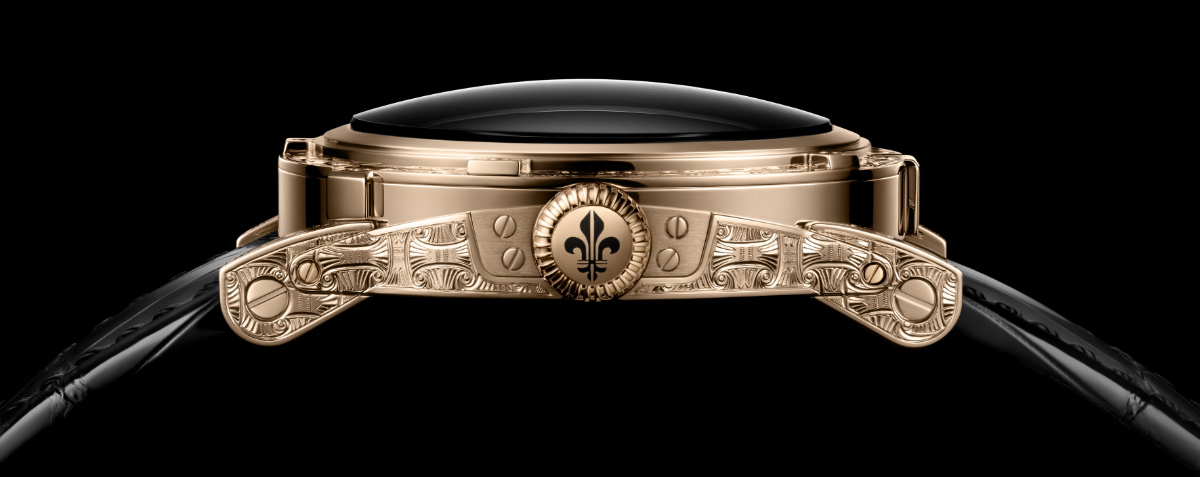

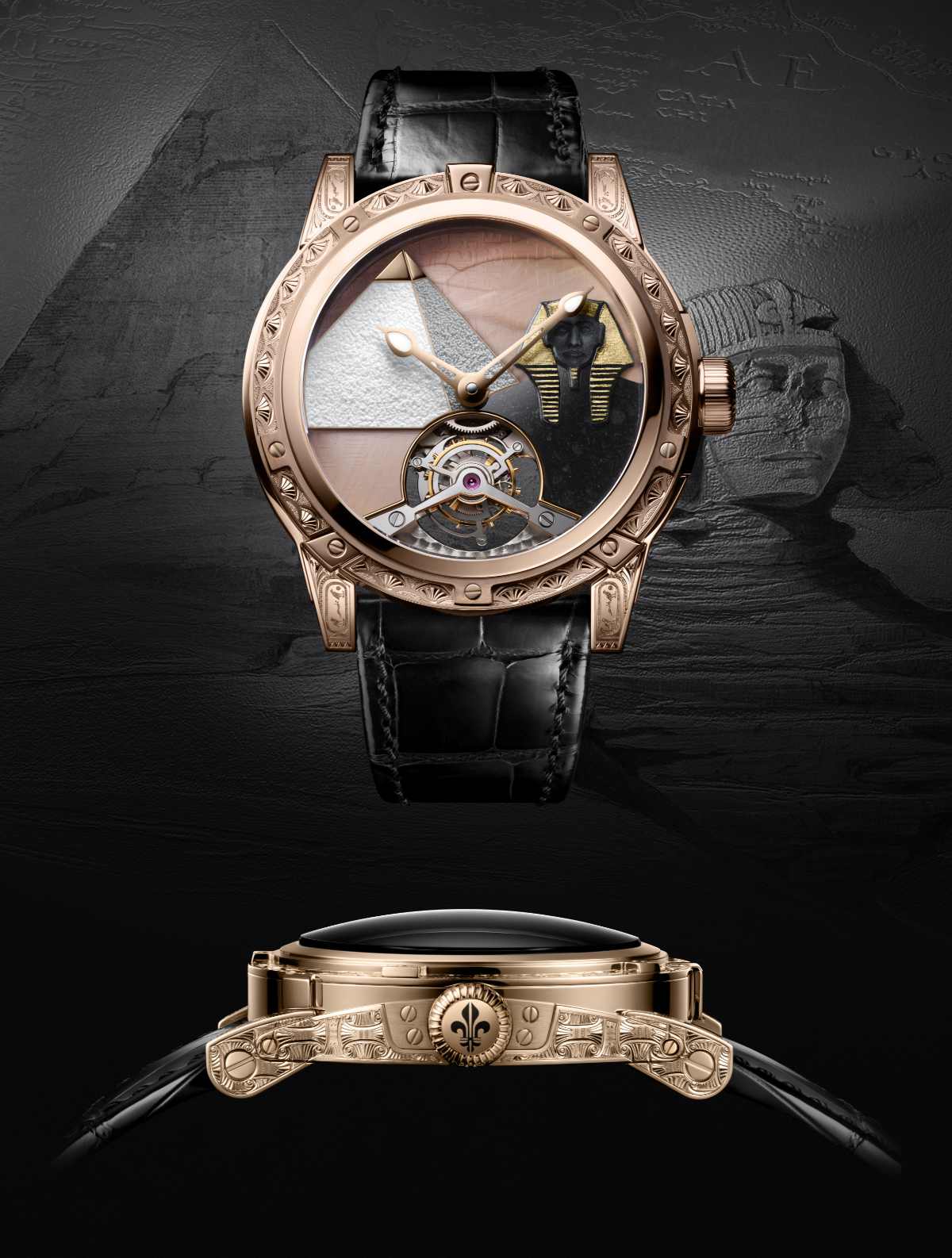
Artistic interpretation of the Pyramid of Khufu
- Dial & case
The dial is cut from a block of Willow Creek Jasper, a natural stone whose design is reminiscent of the sand dunes of Egypt. Hieroglyphics are then applied using a transparency technique to create a mysterious effect.
The pyramid itself is made of gold and covered with carefully calibrated grains of enamel. Perfect control of the firing temperatures is then required to preserve their granular appearance.
Originally, the Pyramid of Khufu was covered with white limestone facings, which explains why this colour appears in this miniature work.
The pyramidion (capstone) was made of electrum, a gold and silver alloy greatly prized by the ancient Egyptians. In this model it is carved from gold and given a mirror polish to maximise its brilliance.
The statue of Khufu is represented on three different levels. Like ancient Egyptian statues, it is made of black basalt and its headdress is adorned with gold miniature painting.
The case is engraved by hand, partly using the taille de joue technique, in which the engraver imparts a particular sense of movement to the engraved object. It depicts the lotus flowers adorning the tops (capitals) of Egyptian columns. The lugs are engraved with Khufu’s cartouche.
- Mechanism – Calibre LM 35
60-second tourbillon movement, awarded the Gold Medal at the last International Chronometry Competition.
- Taj Mahal
The Taj Mahal is a white marble mausoleum built in 1648 by the Muslim Mughal Emperor Shah Jahan in memory of his wife Mumtaz Mahal, which means "Jewel of the Palace" in Persian. A jewel of Mughal architecture, its style combines Islamic, Iranian, Ottoman and Indian influences.
For its construction, more than 1,000 elephants are said to have used to transport white marble from Rajasthan, jasper from Punjab, turquoise from Tibet ... In total, 28 types of fine and ornamental polychrome stones were used for the stone inlays in the white marble.
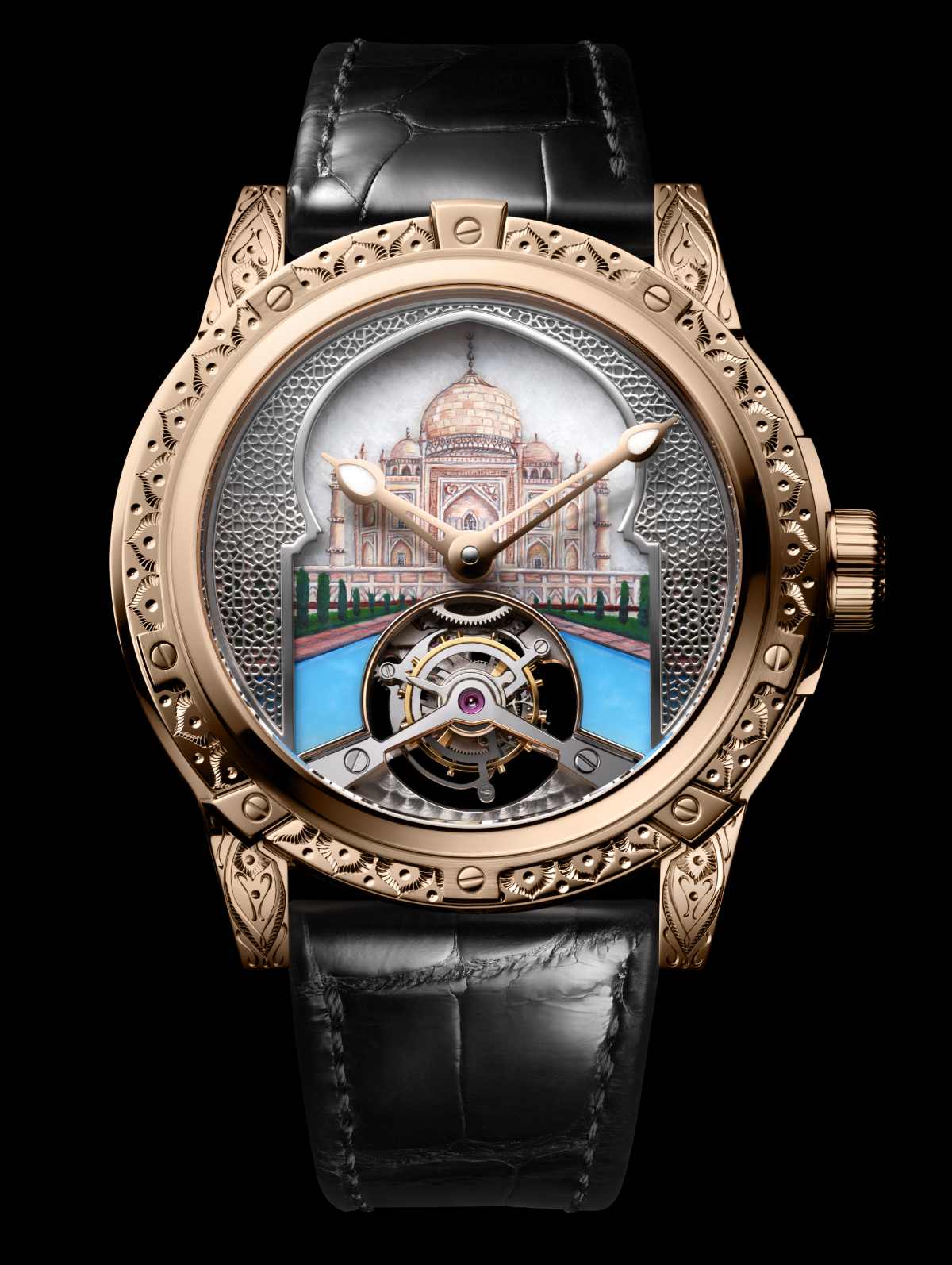

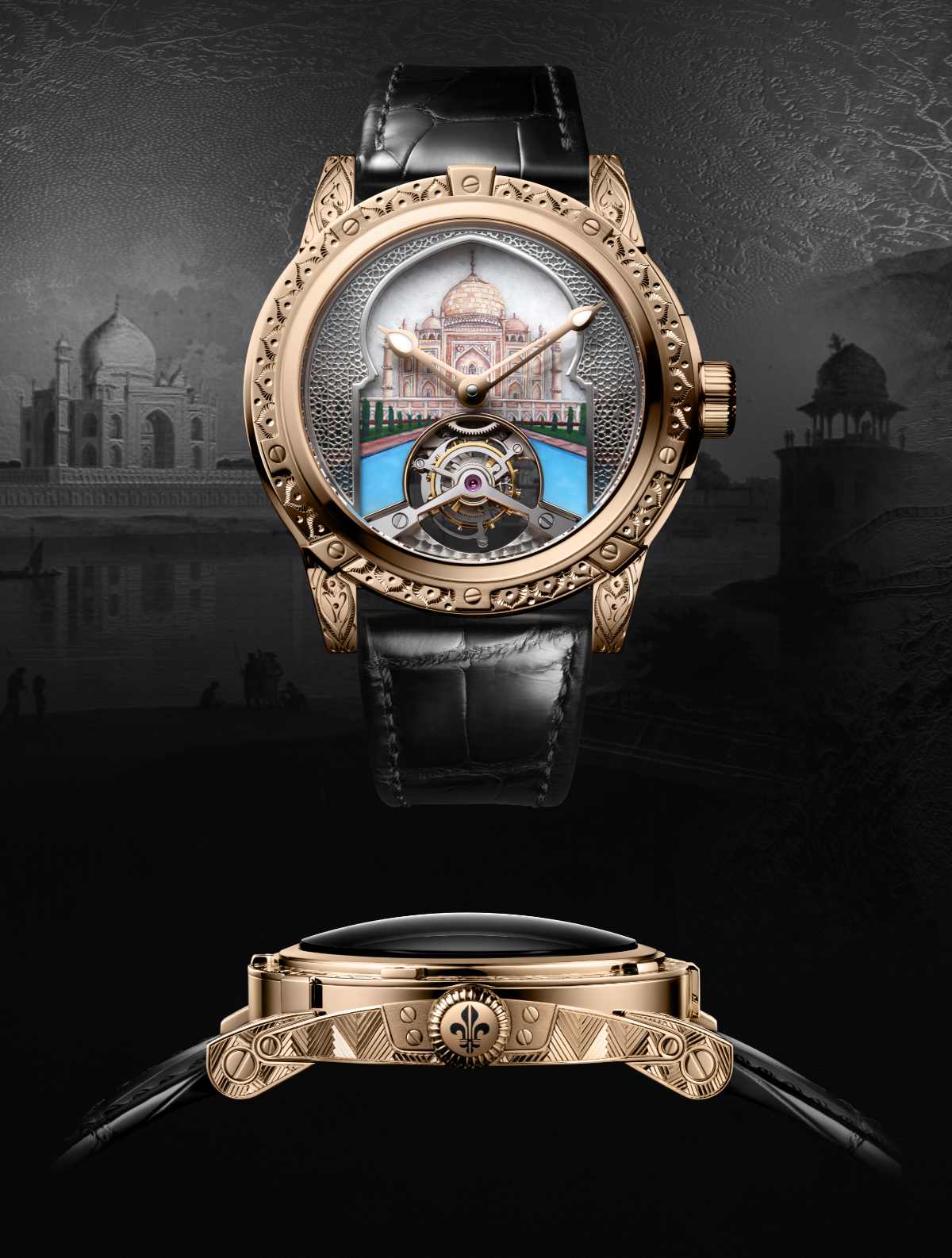
Artistic interpretation of the Taj Mahal
- Dial & case
An elaborate miniature painting graces the white marble dial. It depicted the architectural details of the Taj Mahal, including the slightly bulbous central dome, which is 35 metres high. It is topped by a bronze pinnacle decorated with a kalash, a Hindu symbol of good luck, as well as an Islamic crescent moon symbol.
The dome rests on an inverted lotus-shaped drum. It is surrounded by smaller secondary domes, as well as four free-standing minarets, 43 metres high. They have an octagonal base and a tapered cylindrical body. Vertically, the minarets are divided into three parts by two different balconies.
In front of the Taj Mahal, the turquoise part evokes the water of one of the garden's canals.
A polished and rhodium-plated grid is affixed to the dial. It gives the work a depth effect and is adorned with ornamental motifs reminiscent of the moucharabieh windows found in traditional architecture.
The case is hand-engraved with ornamental representations of the Taj Mahal and Indian mandala patterns, complemented by an engraving of a Mughal motif on the bezel. The subtle work on the upstrokes and downstrokes creates a pleasing decorative contrast.
- Mechanism – Calibre LM 35
60-second tourbillon movement, awarded the Gold Medal at the last International Chronometry Competition.
- The Great Wall of China
The Great Wall is the most important architectural structure ever built, in terms of length, surface area and mass. It stretches over 6,200 kilometres, with walls averaging six to seven metres high and four to five metres wide.
Intended to protect China's northern frontier, it starts at the border with the coast north of Beijing and extends to the Gobi Desert. Its construction dates initially from the 3rd century BC to the 17th century.
Since 1987, the Great Wall has been classified as a UNESCO World Heritage Site.
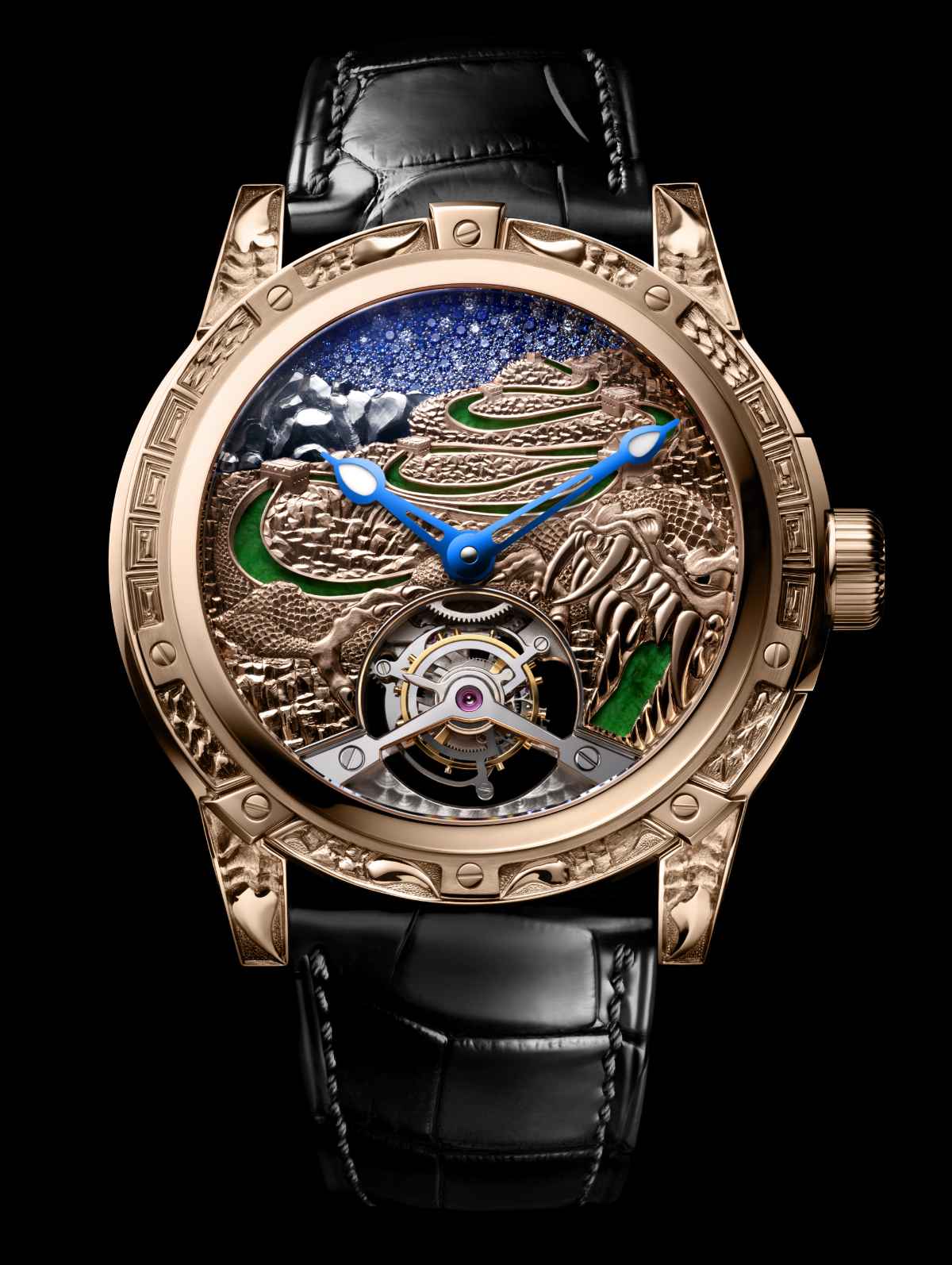
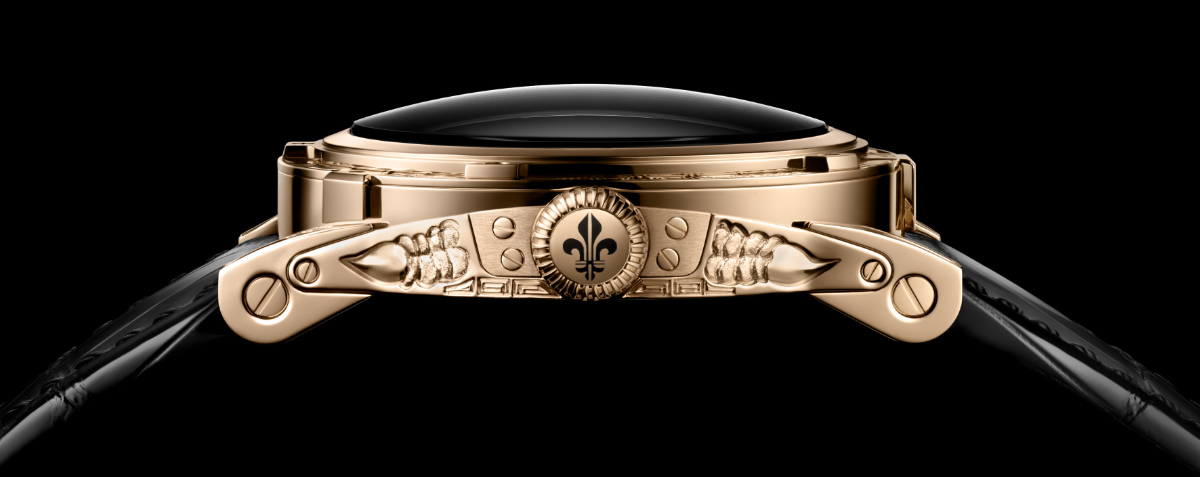
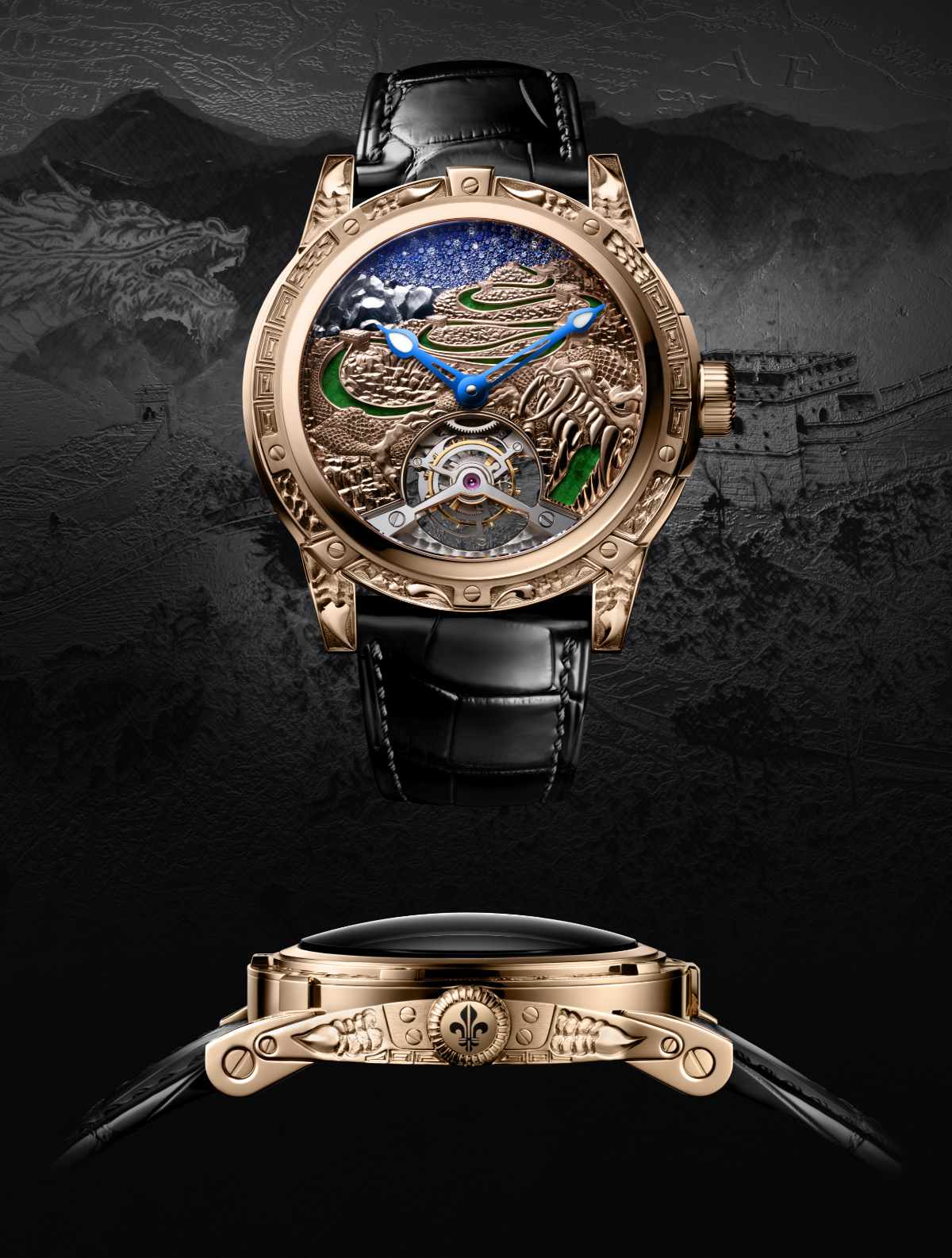
Artistic interpretation of the Great Wall of China
- Dial & case
The hand-engraved rose gold applique depicts the Great Wall, which gradually transforms into a powerful dragon surrounding the jade path that is lost in the perspective of an endless wall. The bright green shine of the maw-sit-sit jade stone lends itself wonderfully to illuminating the path of the dragon.
In the background, a celestial vault consists of a gradient paving of 129 brilliant-cut sapphires and 11 brilliant-cut diamonds. Through its three shades of blue, it evokes a deep sky, studded with a few diamonds. It overlooks the distant mountain, appearing as a hand-engraved white gold applique.
A subtle play on height dissociates the elements of this artwork. It enables the dragon to express its power and dominate the scene.
The case helps assert this authority, as the hand engraving gives life to the dragon theme picked up on the case middle, bezel and lugs.
- Mechanism – Calibre LM 35
60-second tourbillon movement, awarded the Gold Medal at the last International Chronometry Competition.
- Statue of Christ the Redeemer
Christ the Redeemer is a monumental statue of Christ. Installed on Mount Corvocado, it overlooks Rio de Janeiro. An icon of the city, the statue is 38 metres high and as such is one of the world’s largest statues.
Designed by Brazilian engineer Heitor da Silva Costa, it was created by French sculptor Paul Landowski and Romanian sculptor Gheorghe Leonida (for the head), then erected in collaboration with the French engineer Albert Caquot.
Completed in 1931, the statue is made of reinforced concrete and soapstone, a soft yet very resistant rock. The head weighs 30 tons, each hand eight tons, and the span of the outstretched hands is 28 metres.
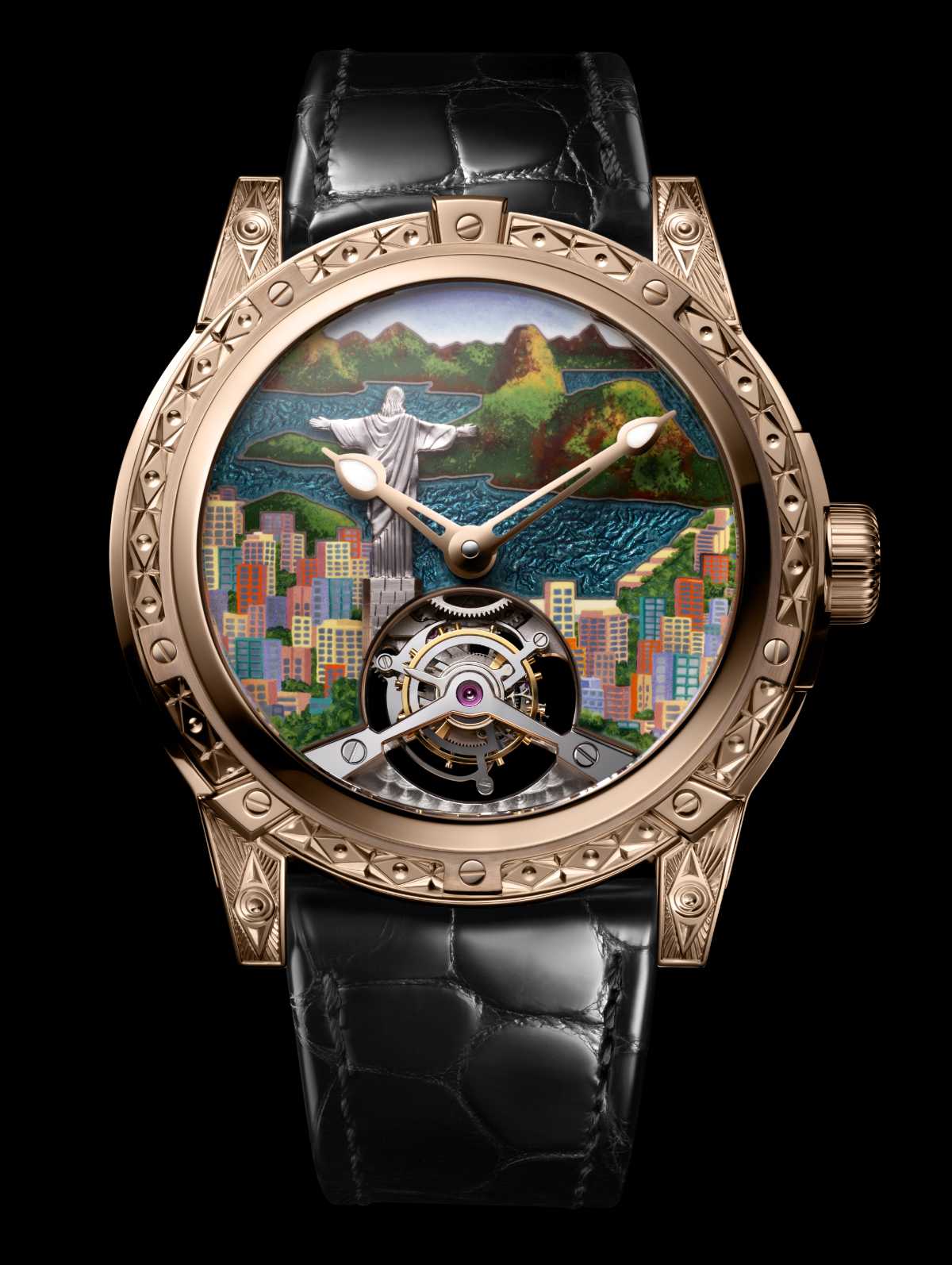
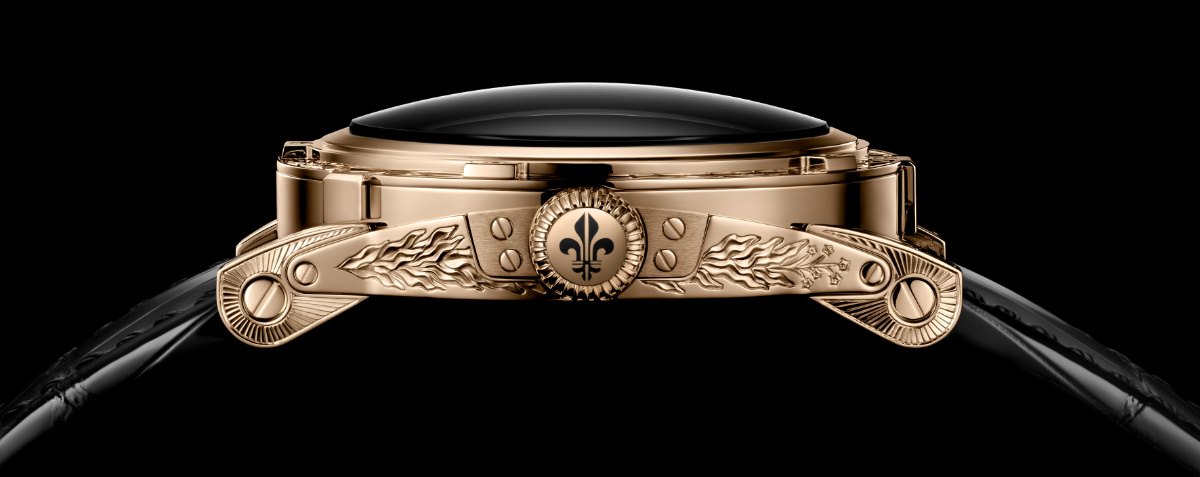
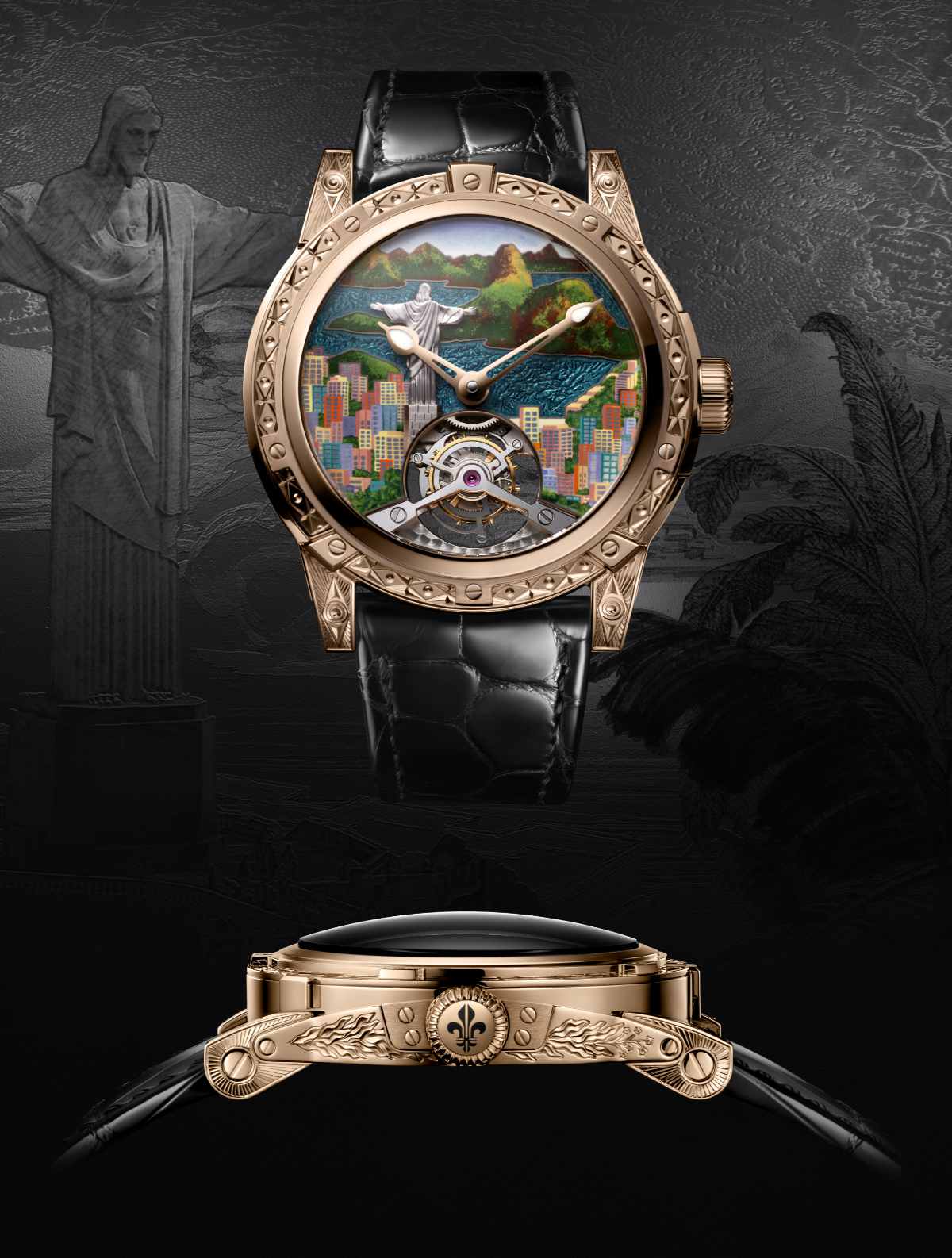
Artistic interpretation of Christ the Redeemer
- Dial & case
From the top of Corcovado, Christ the Redeemer appears to be protecting Rio and its famous Sugar Loaf Mountain, as well as the Bay of Guanabara and its 130 islands. The statue is hand-engraved on a gold base and stands out majestically from the landscape with a relief applique.
It faces a sea whose floor is hand-engraved and then enamelled in translucent azure blue. The mountains are also glazed in opaque Grand Feu enamel. To instil even more life into this creation, the multicoloured buildings of the town are depicted in enamelled micro-painting.
The various enamelled elements are based on the champlevé technique, which consists of removing a little material to apply the enamel.
The case features a skilful reinterpretation of the decorative elements of the Brazilian coat of arms: coffee leaves and tobacco leaves. These intaglio elements served as a guiding thread enabling the engraver to define a powerful theme, accentuating both the power of Christ the Redeemer and of Brazil itself.
- Mechanism – Calibre LM 35
60-second tourbillon movement, awarded the Gold Medal at the last International Chronometry Competition.
- Machu Picchu
Machu Picchu means "old mountain". This 15th century ancient Inca city is perched on a promontory joining the Machu Picchu and Huayna Picchu mountains. The presumed residence of the first Inca Emperor (Pachacútec, who reigned from 1438 until his death in 1471), it was a religious sanctuary of the utmost importance.
Following the collapse of the Inca Empire, Machu Picchu fell into oblivion for several centuries. The Sacred City is considered the masterpiece of Inca architecture. It is located in the east of the Andes mountain range, on the edge of the Amazonian forest. The ruins of 172 constructions are located at an altitude of 2,438 metres, between the two peaks: Huayna Picchu and Machu Picchu.
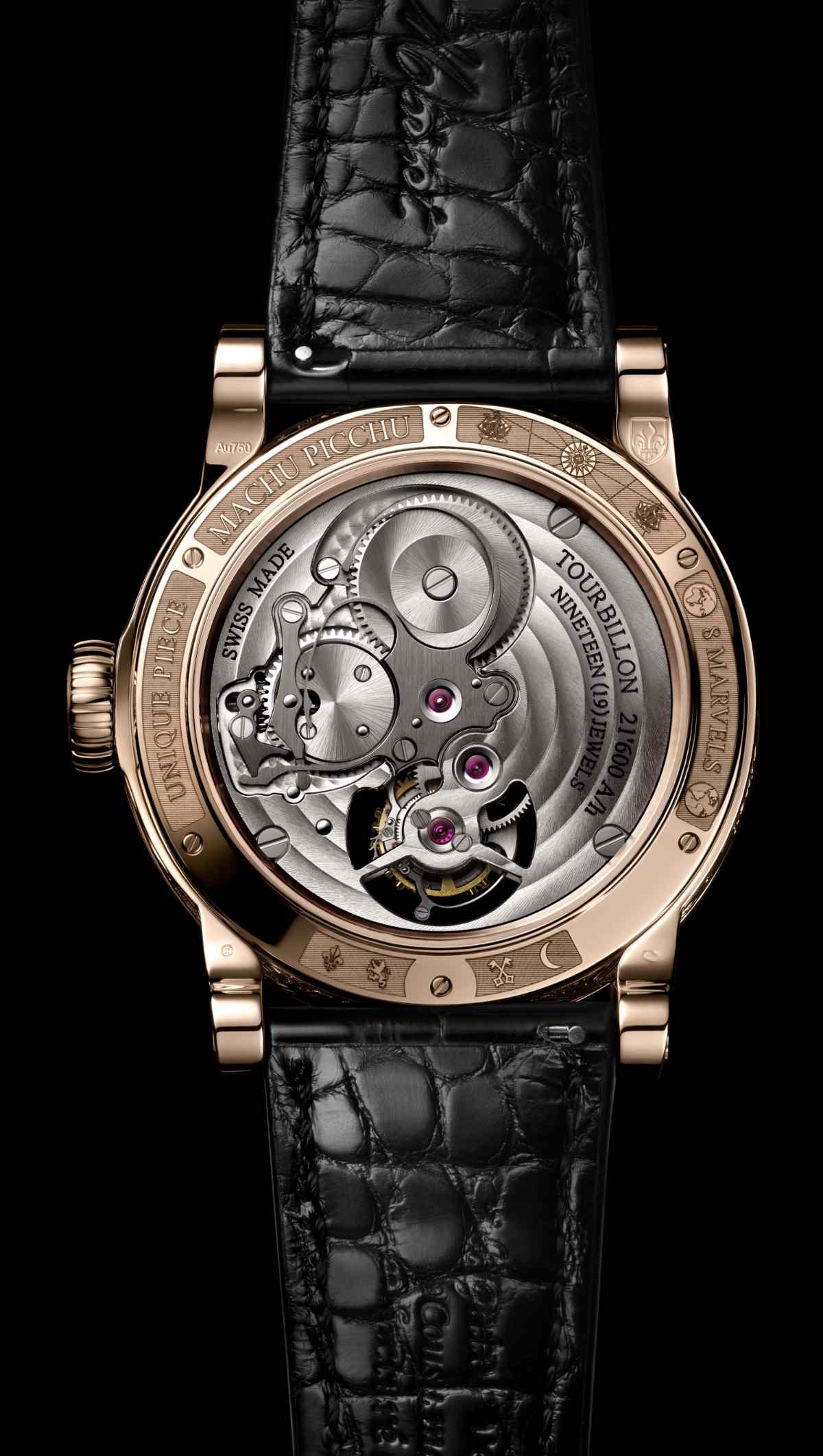
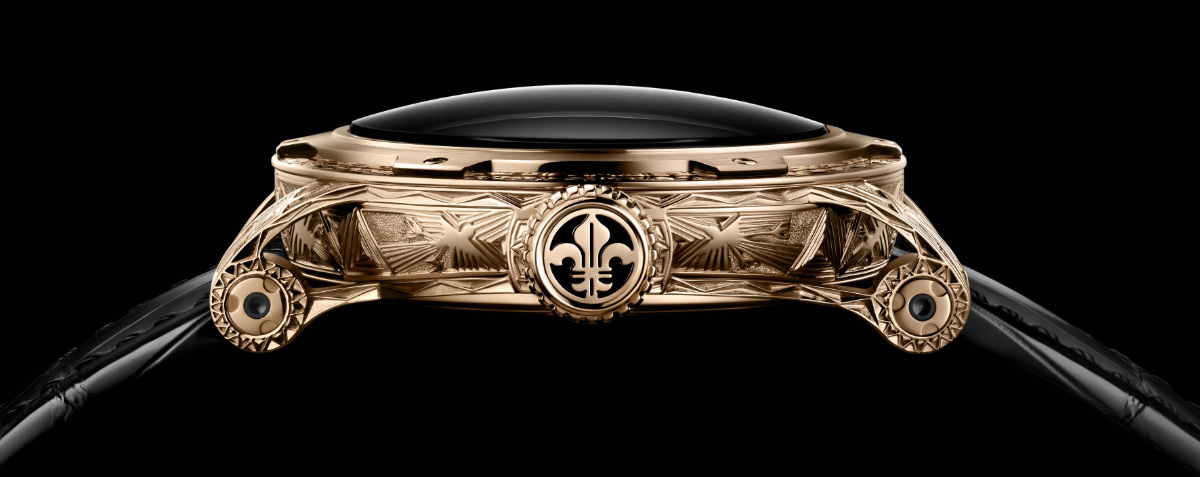
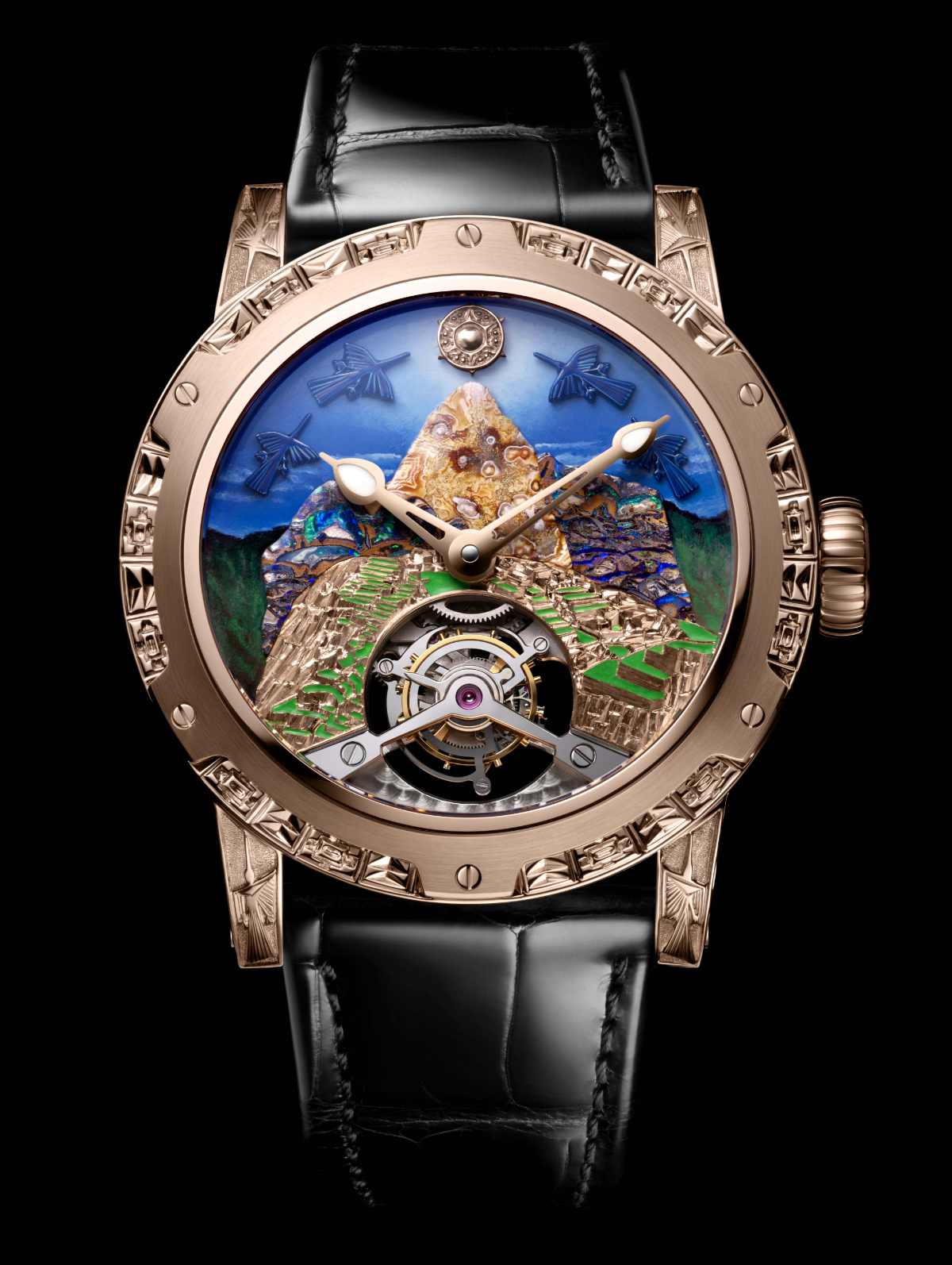
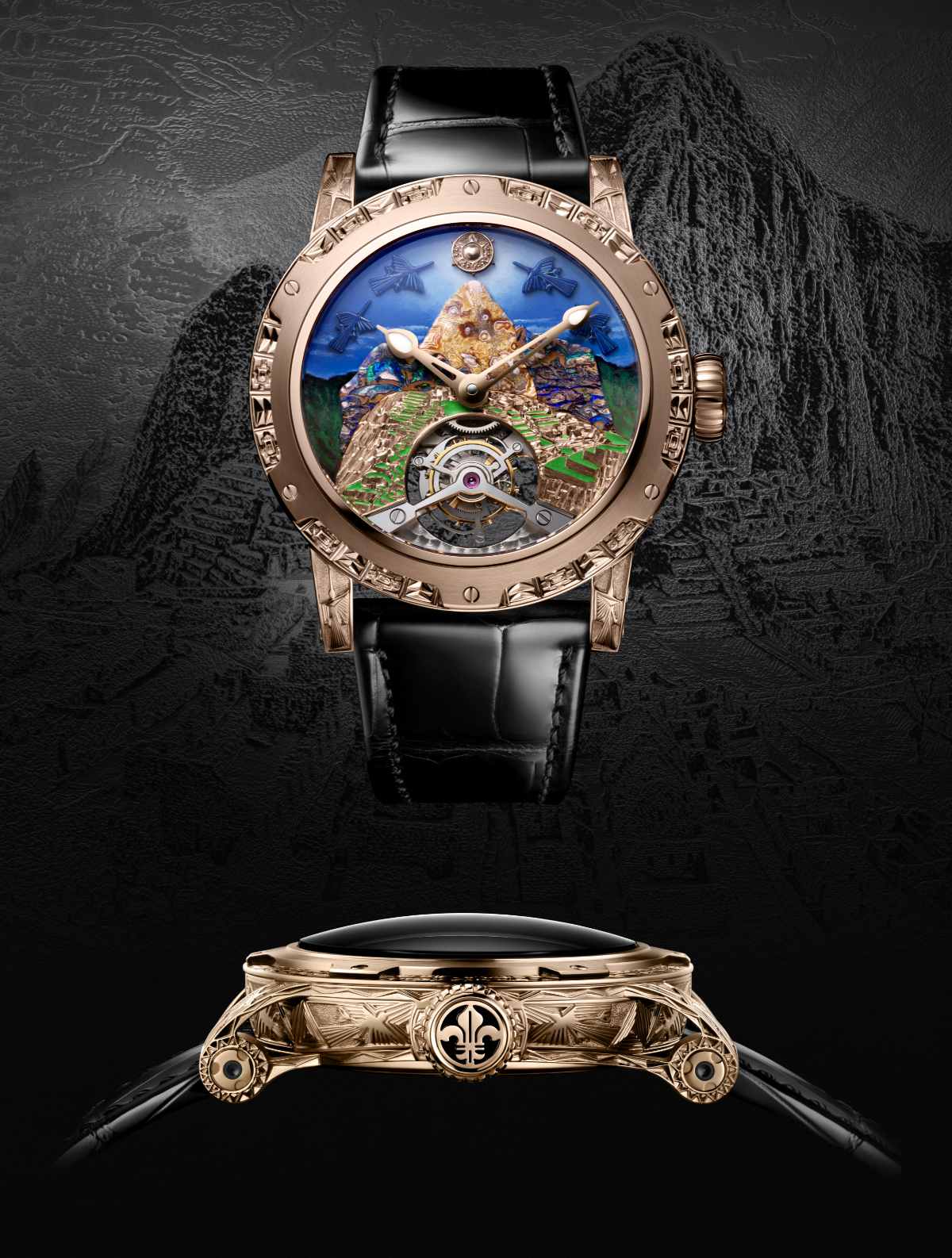
Artistic interpretation of Machu Picchu
- Dial & case
A hand-engraved golden sun shines above the creation while respecting the iconographic representation of the Incas. Everything converges towards this daystar embodying the spirituality of the Inca culture. These include four Andean condors, a true national symbol of Peru. Meticulously engraved and painted by hand, these birds fly in a deep blue sky, crafted using the micro-painting technique. Their style is directly inspired by drawings of the Nazca civilization, a pre-Colombian culture of southern Peru (200 BC to 600 AD).
The site of Machu Picchu is represented by a golden city at the foot of two marvellous mountains cut and carved with great finesse from a Yowah Nut opal. They surround a central stone in Crazy Lace Agate, chosen for its delicate veins pointing towards the sun.
The desire to bring out the smallest details of the golden city and its various buildings called for the production manufacture of special tools, especially for the chasing. The terraces featuring a distinctive farming system are enhanced with green lacquer.
The case is adorned with a strong relief-effect hand engraving of the sun at 12 o’clock and at 6 o'clock. It is surrounded by the hummingbird and the condor from the Nazca Geoglyphs.
- Mechanism – Calibre LM 35
60-second tourbillon movement, awarded the Gold Medal at the last International Chronometry Competition.
Origin of the “8 Marvels of the World”
In the course of his travels, Jean-Marie Schaller has revelled in discovering an array of monuments as varied as they are powerful, each playing a role in composing the tapestry of human genius. He has therefore personally selected "8 Marvels of the World" representative of artistic diversity and testifying to human cultures through time.
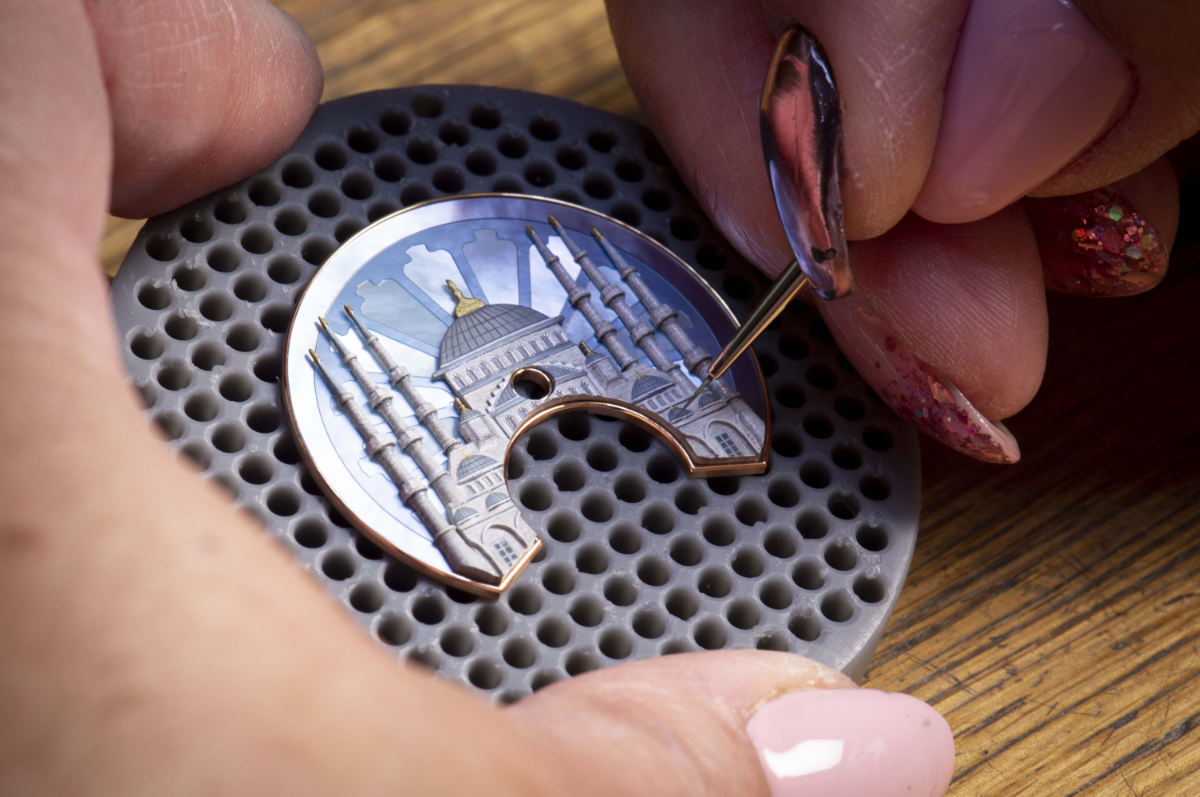
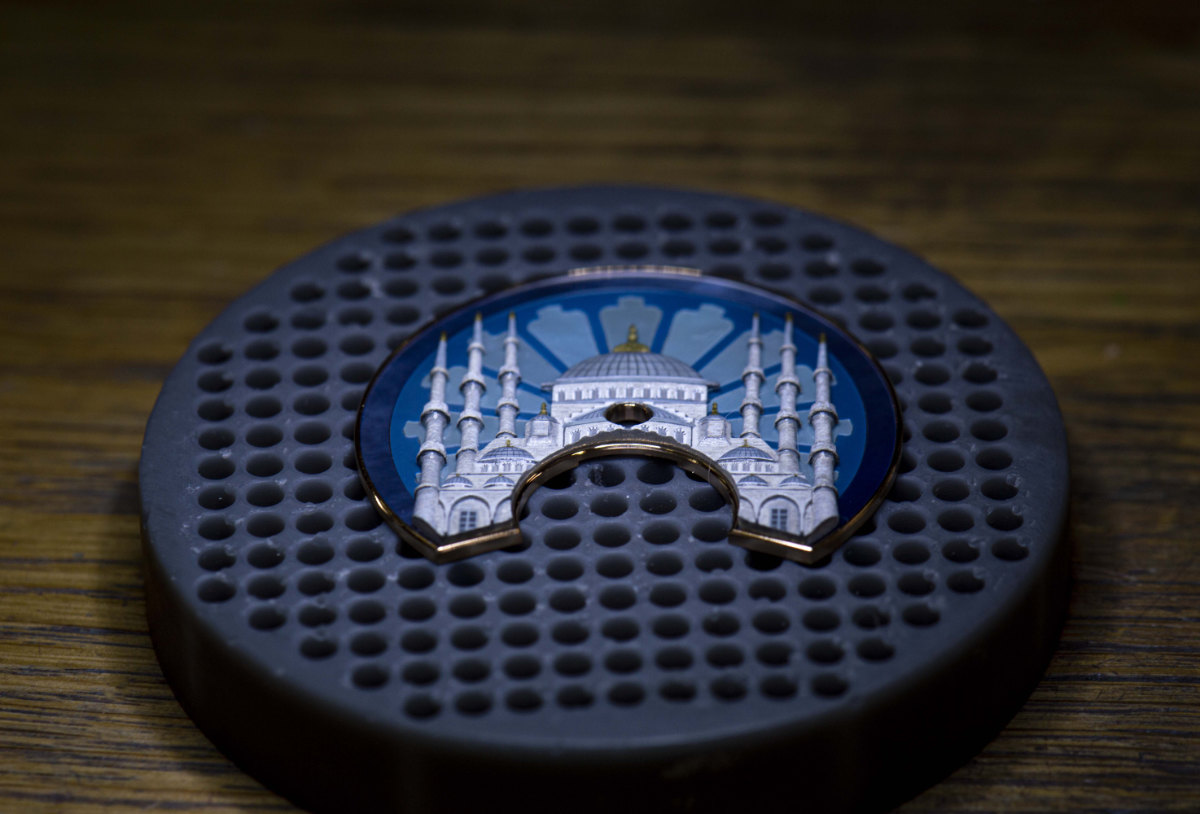
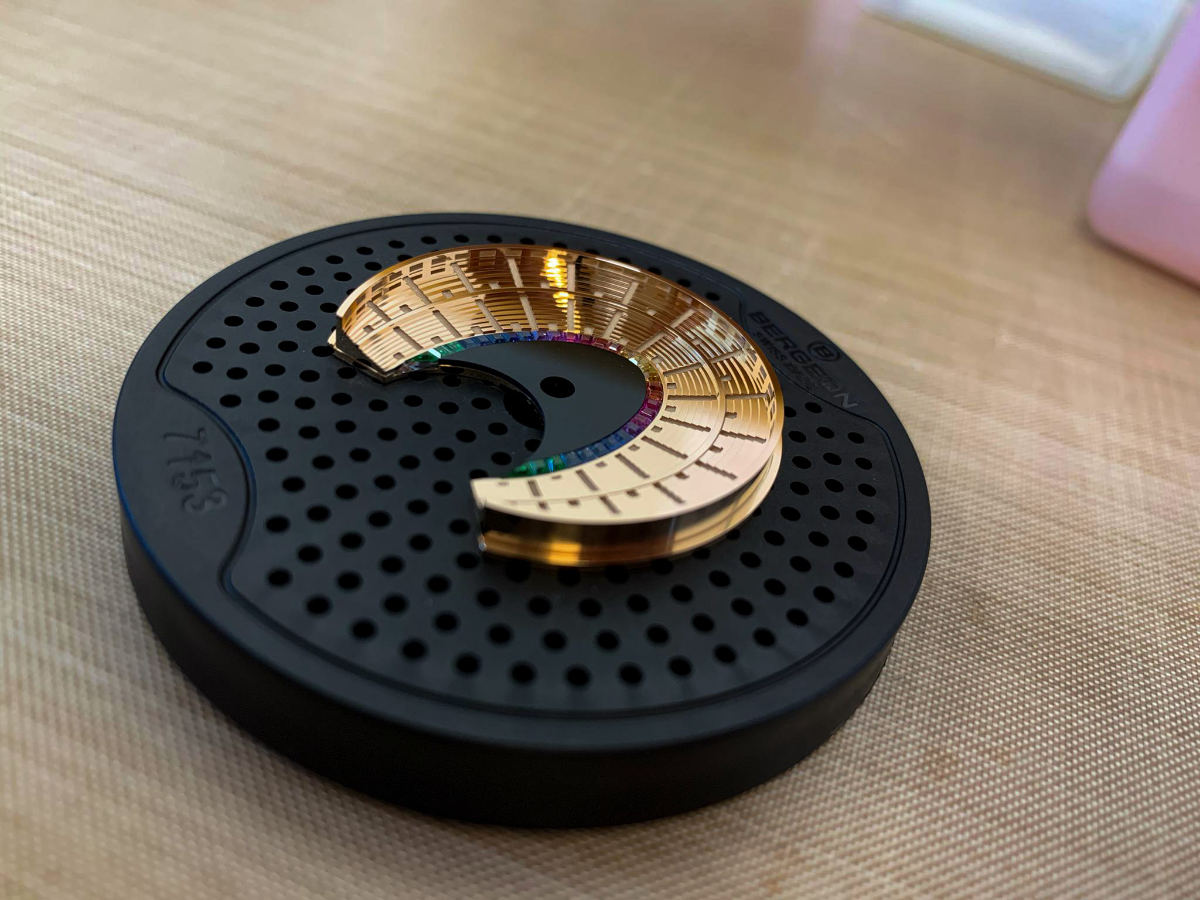
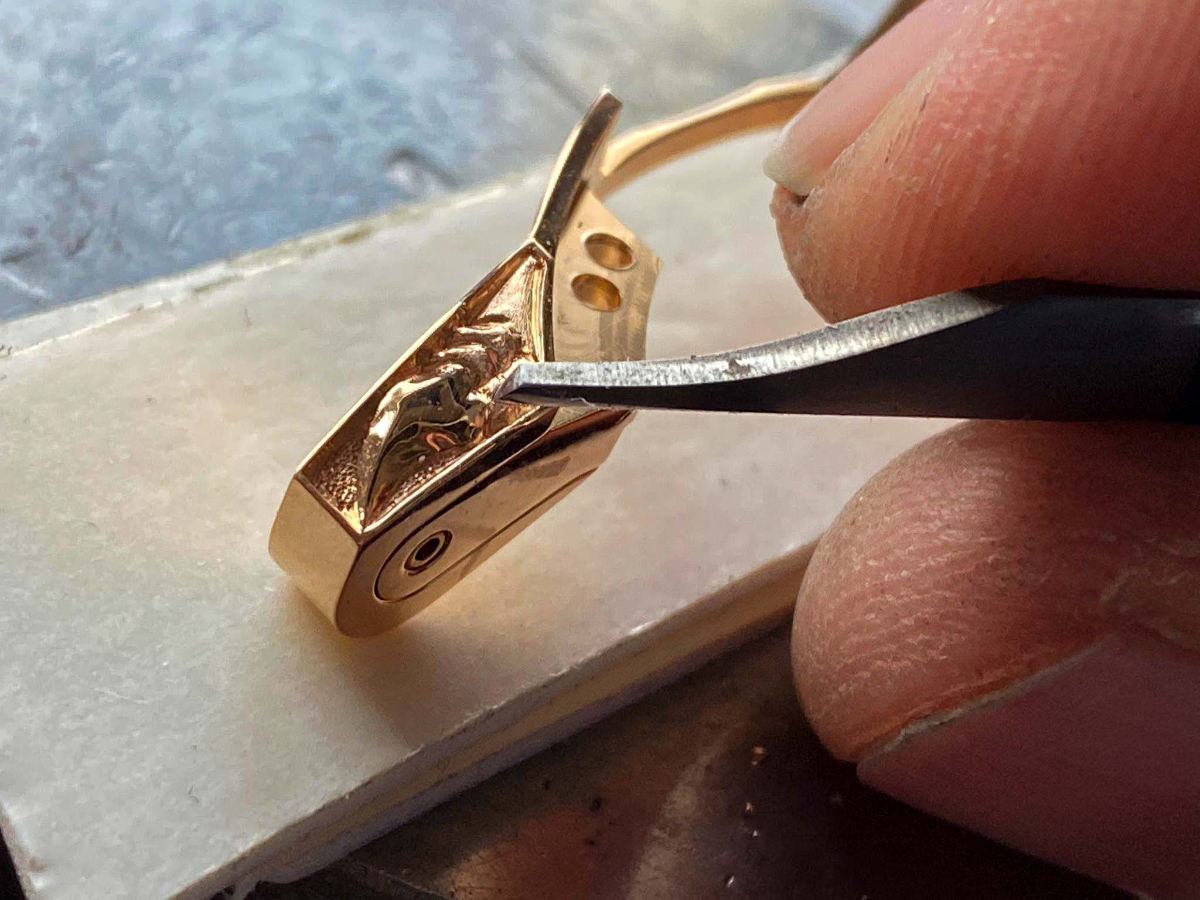
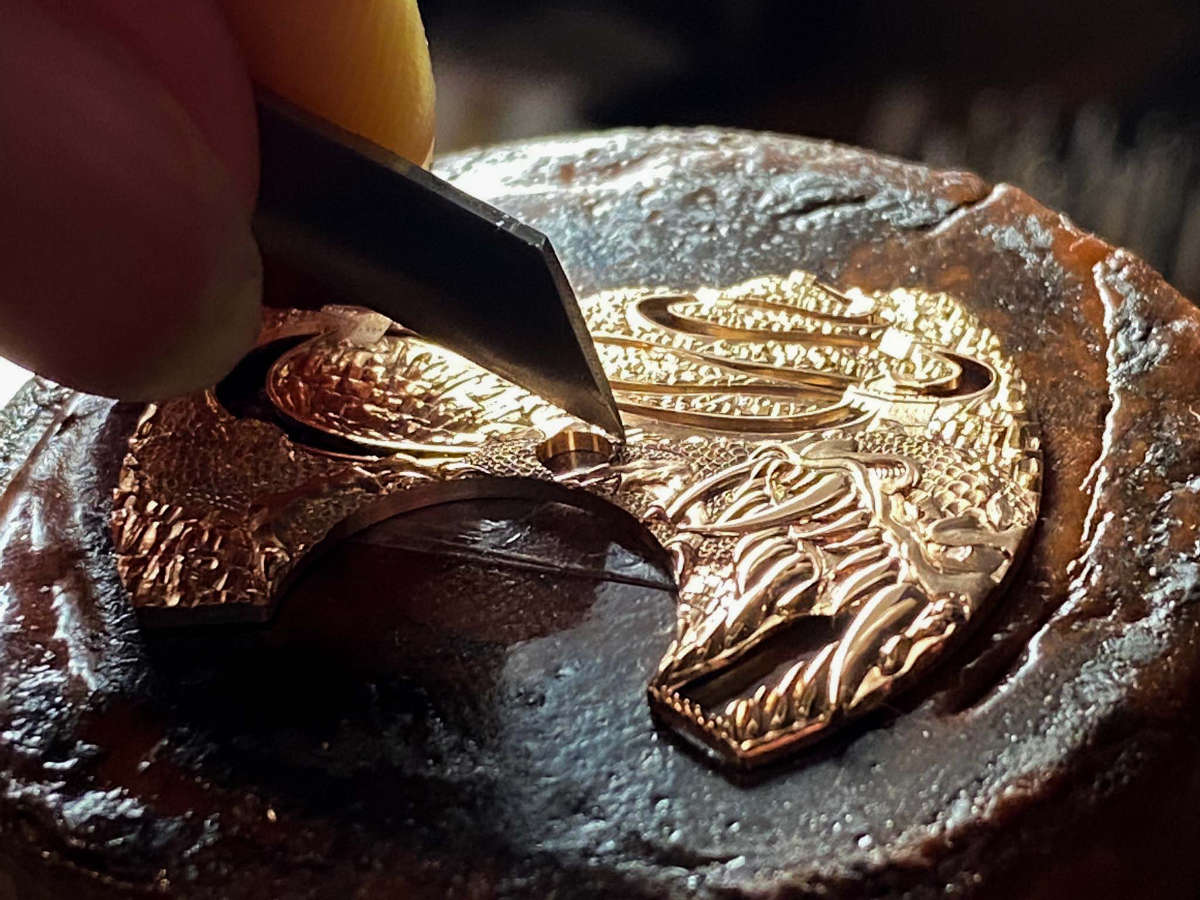
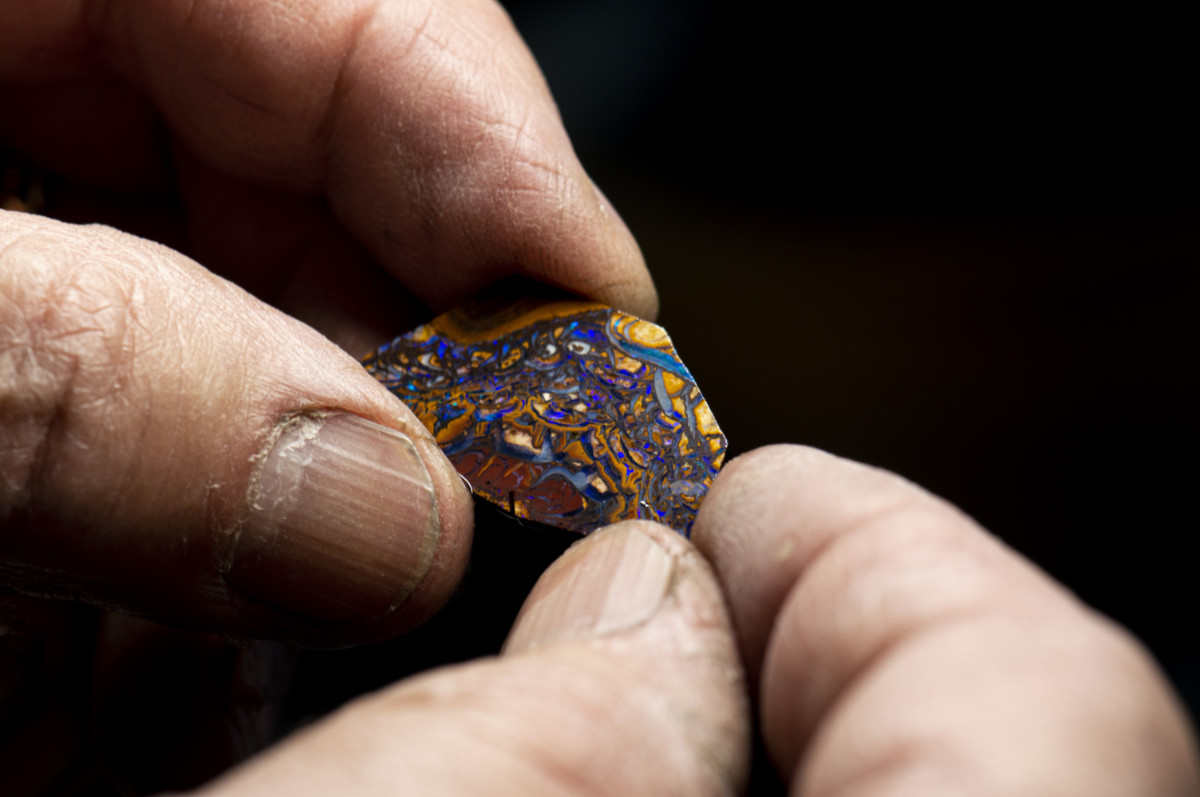
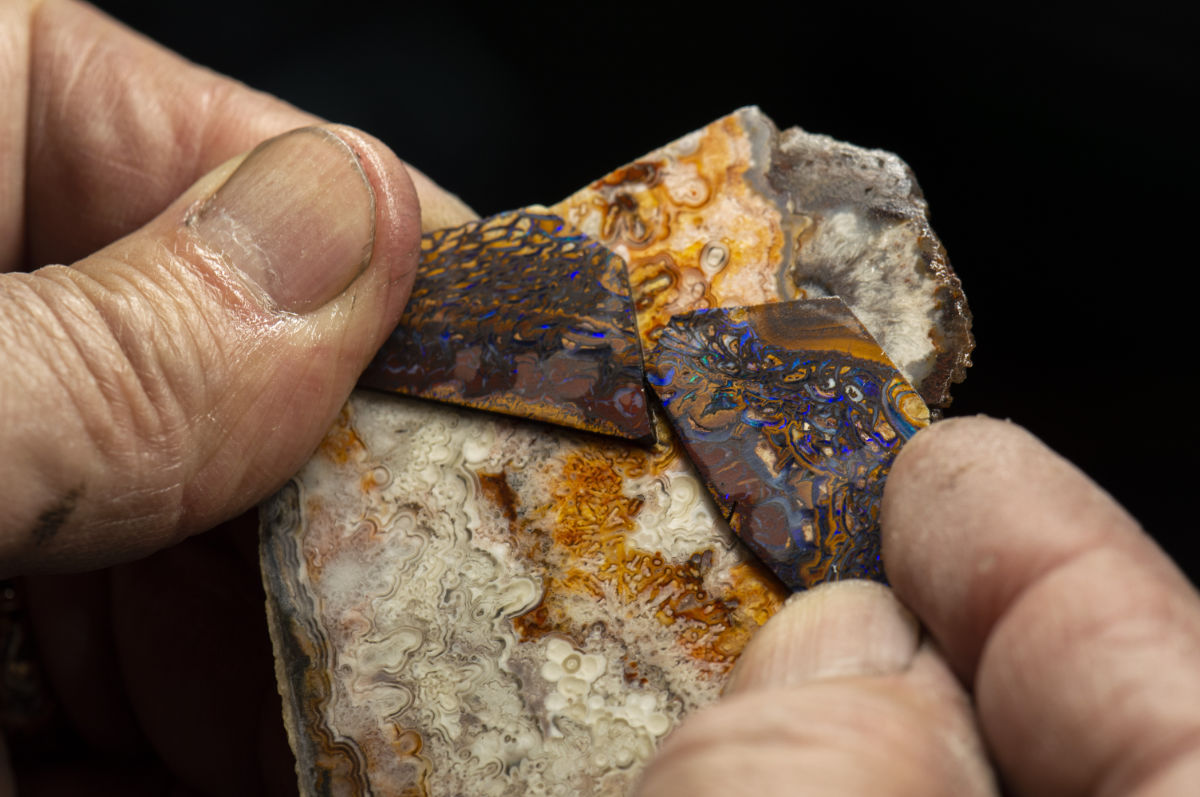
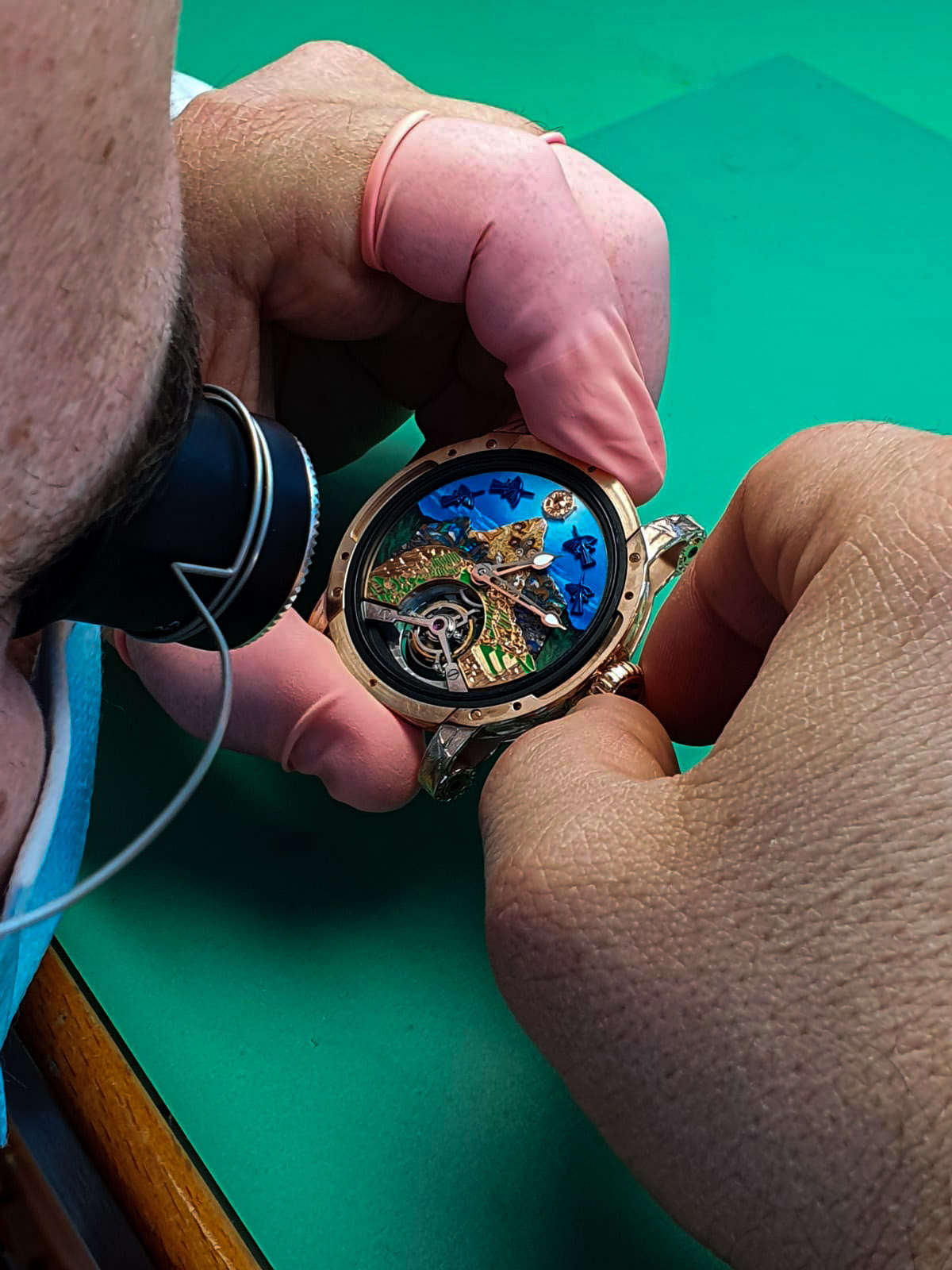
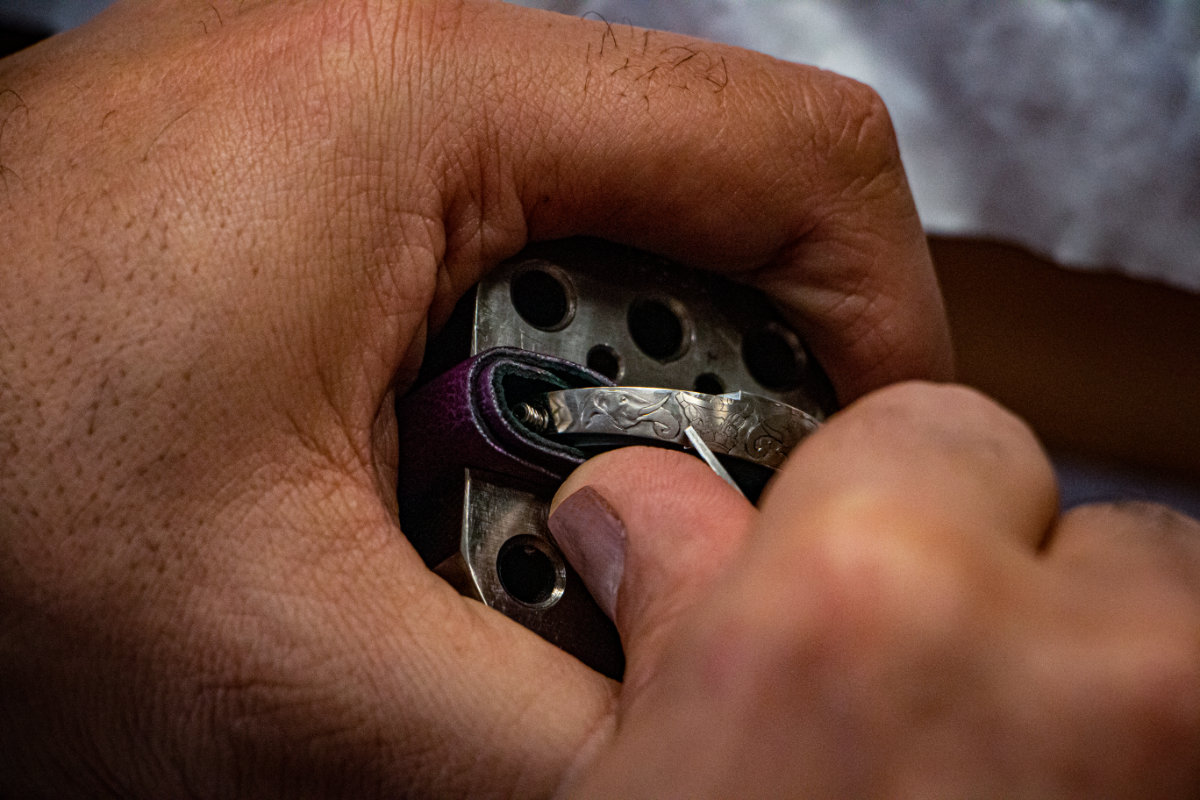
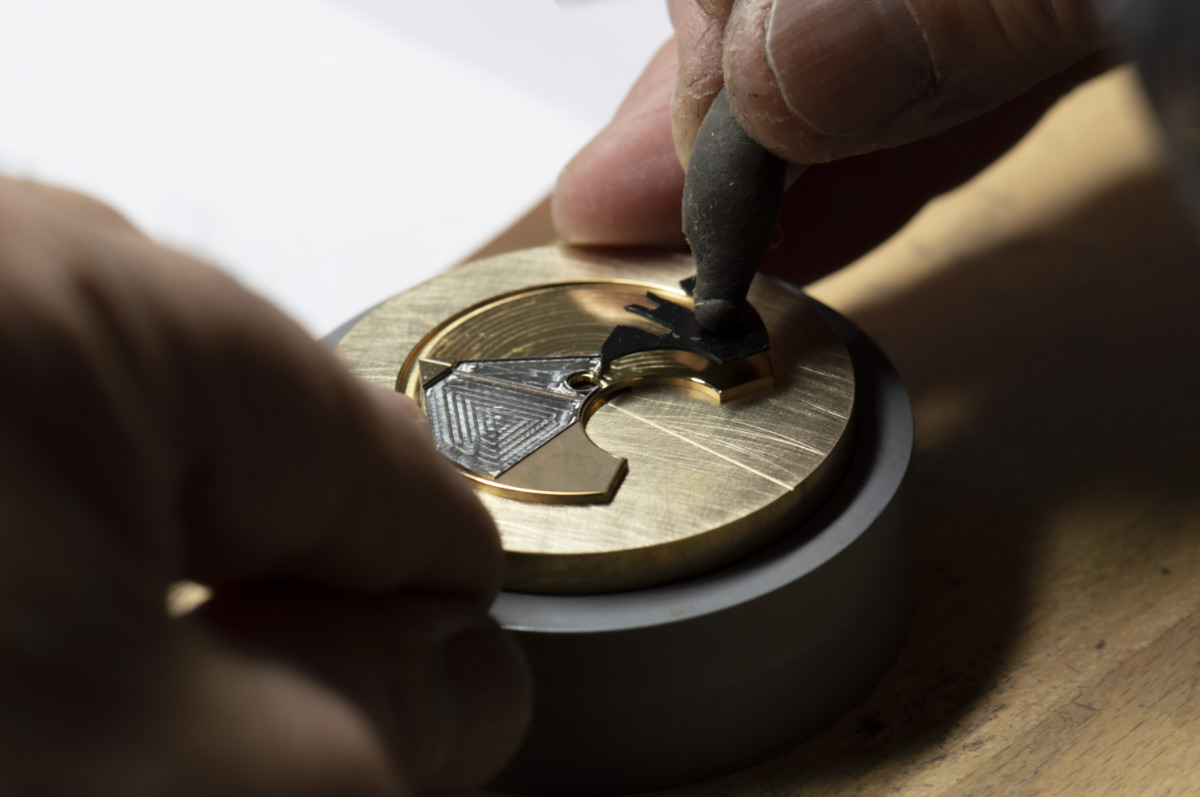
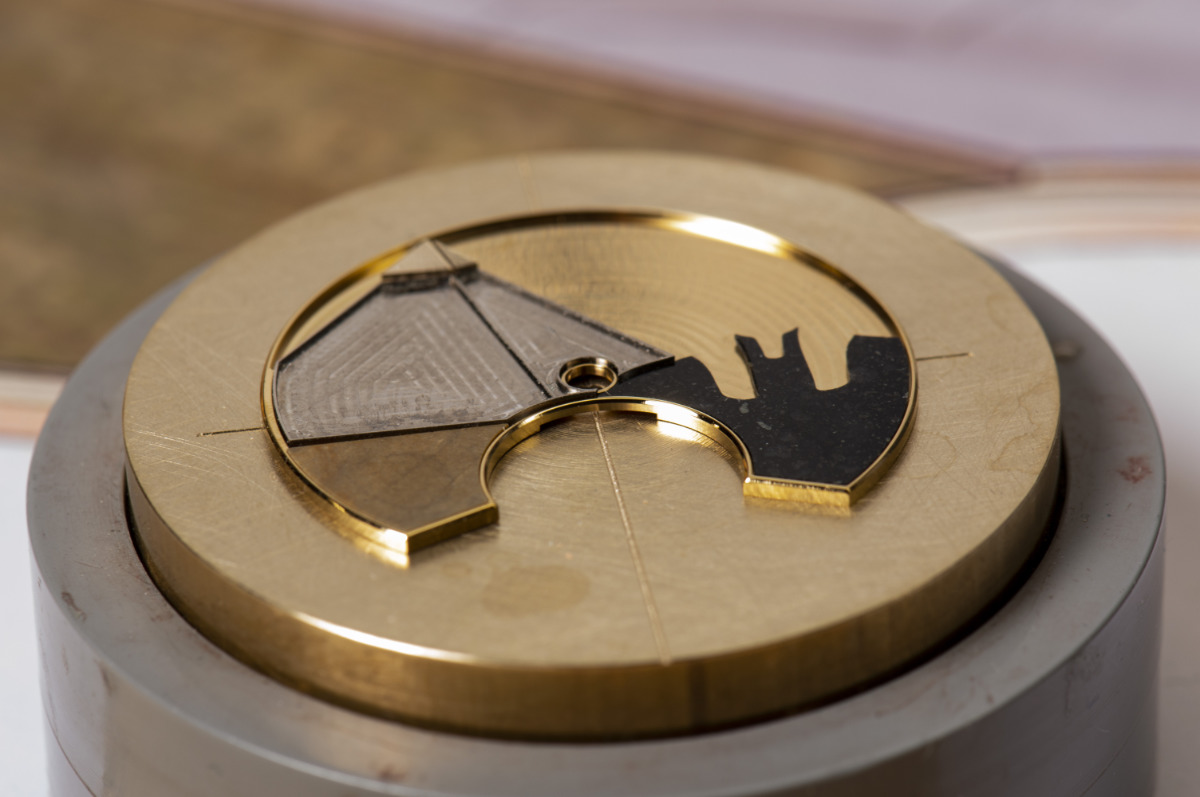
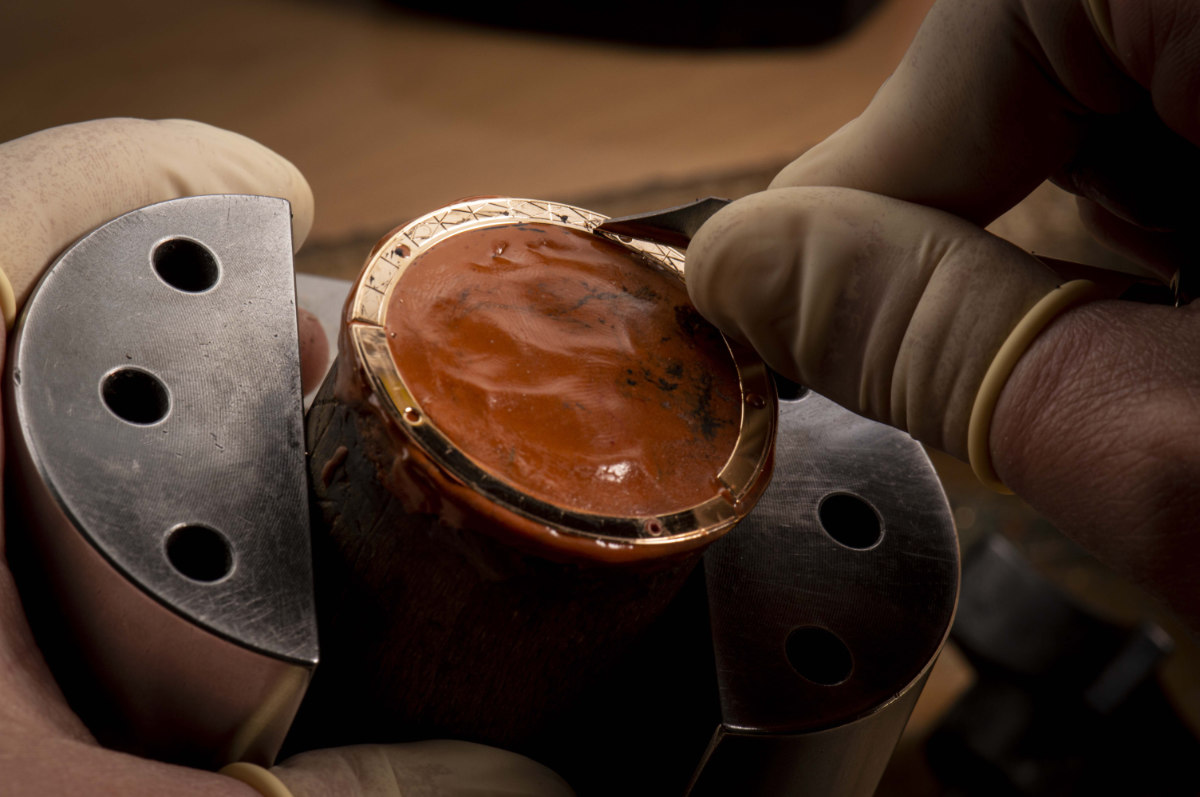
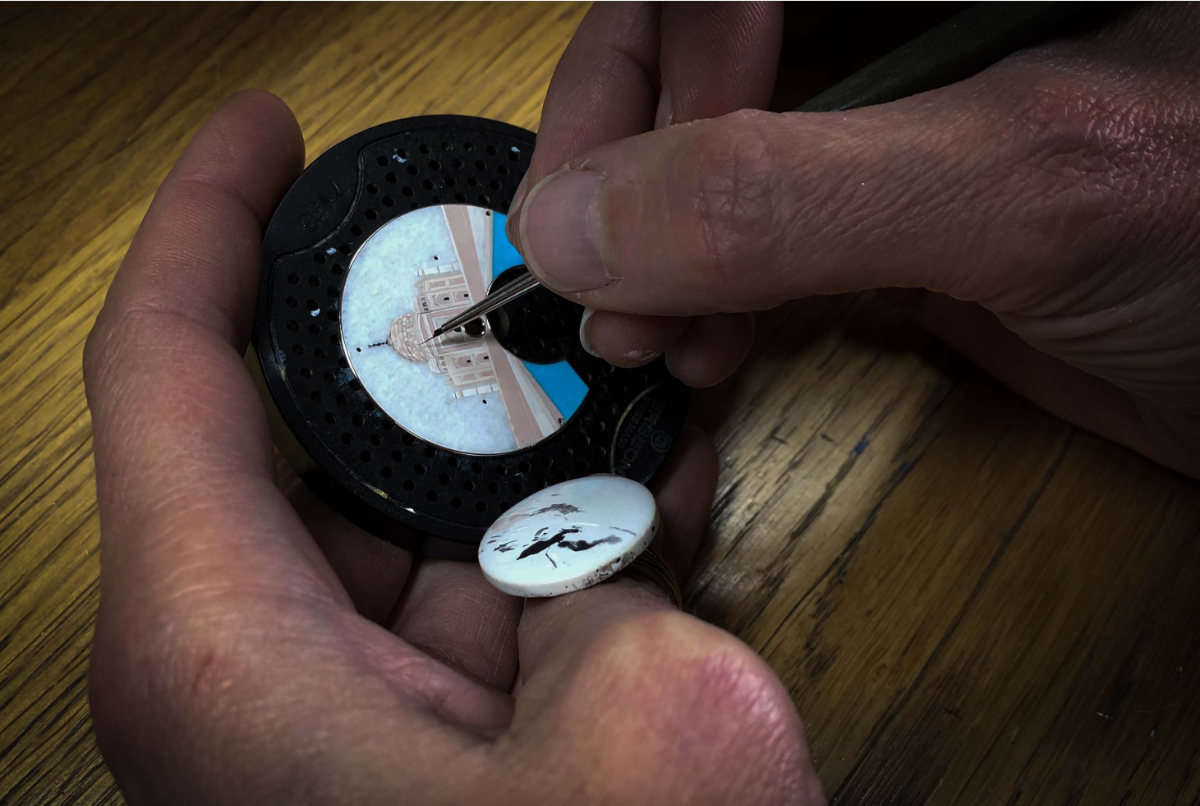
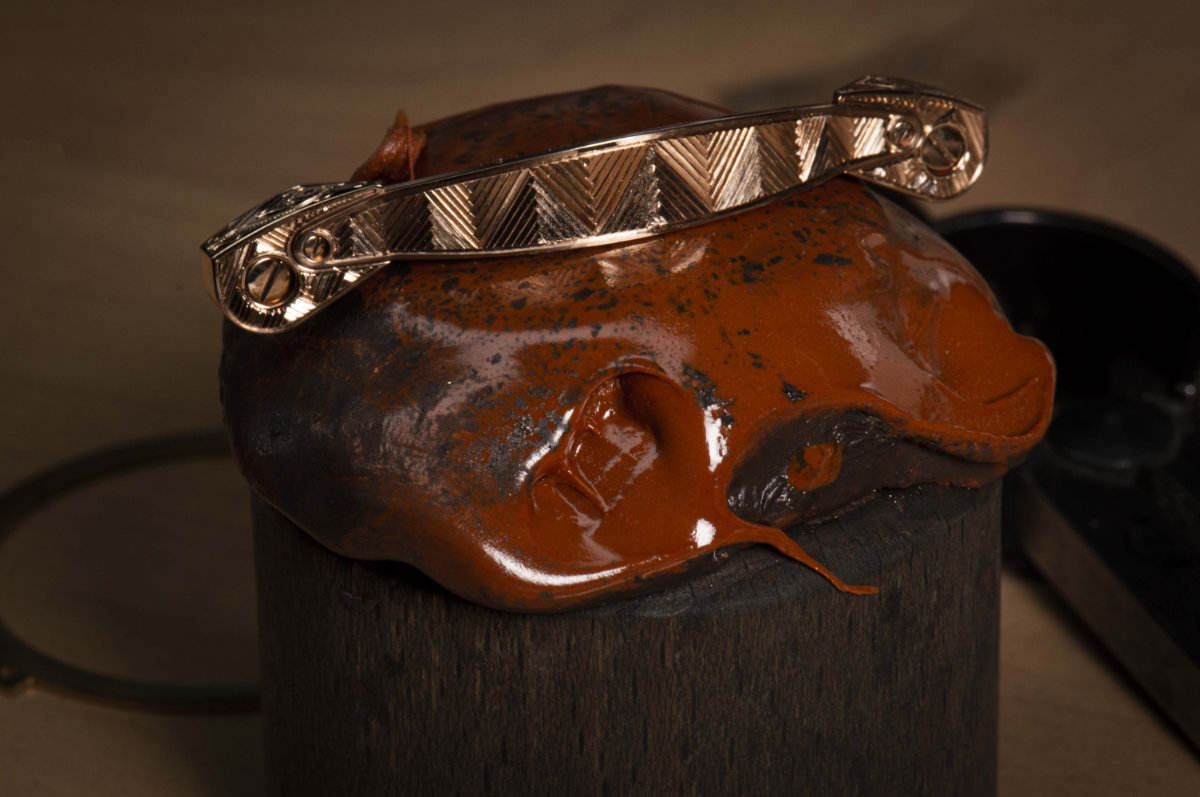
Louis Moinet's travel trunk
The trunk evokes a journey through time. It houses the eight one-of-a-kind creations composing the "8 Marvels of the World". It is made of natural elm burr and adorned with a silver-coloured Fleur de Lys pattern. Its domed lid is topped by two cognac-coloured leather straps.
Its interior is made of black leather and the inside of the cover features an 18th century treasure: a globe drawn by Johann Gabriel Doppelmayr. The print is enhanced by watercolours, making this creation truly one of a kind.
About Louis Moinet
Jean-Marie Schaller created Les Ateliers Louis Moinet in St-Blaise (NE) in 2004. The fully independent firm was established to honour the memory of Louis Moinet (1768-1853): master watchmaker, inventor of the chronograph and high frequency (216,000 vibrations per hour) in 1816 (certifications by Guinness World Records™). Louis Moinet was a watchmaker, scholar, painter, sculptor, and teacher at the School of Fine Arts – as well as the author of the Traité d’Horlogerie, a watchmaking treatise published in 1848 that remained a definitive work of reference for a century.
Today, Ateliers Louis Moinet is perpetuating this legacy. The firm’s mechanical timepieces are produced as one-of-a-kind models or limited editions only and comprise two categories: “Cosmic Art” and “Mechanical Wonders”. Louis Moinet creations often make use of unusual and rare components, such as extraterrestrial meteorites or prehistorical materials. The brand’s core values are creativity, exclusivity, art and design. This uniquely creative mechanical approach combined with bespoke fine watchmaking has enabled Louis Moinet to win some of the most coveted honours around the world, including a UNESCO Award of Merit, six Red Dot Design Awards (including one Best of the Best Award), a Horological Creativity Contribution Award, gold and bronze medals in the International Chronometry Competition, ten Good Design Awards, four Middle East Watch of the Year Awards, two Robb Report “Best of the Best” Awards, three German Design Awards, two MUSE Design Awards, a Moscow Grand Prix Award, and a “Chronograph of the year” distinction from Begin Magazine, Japan.












